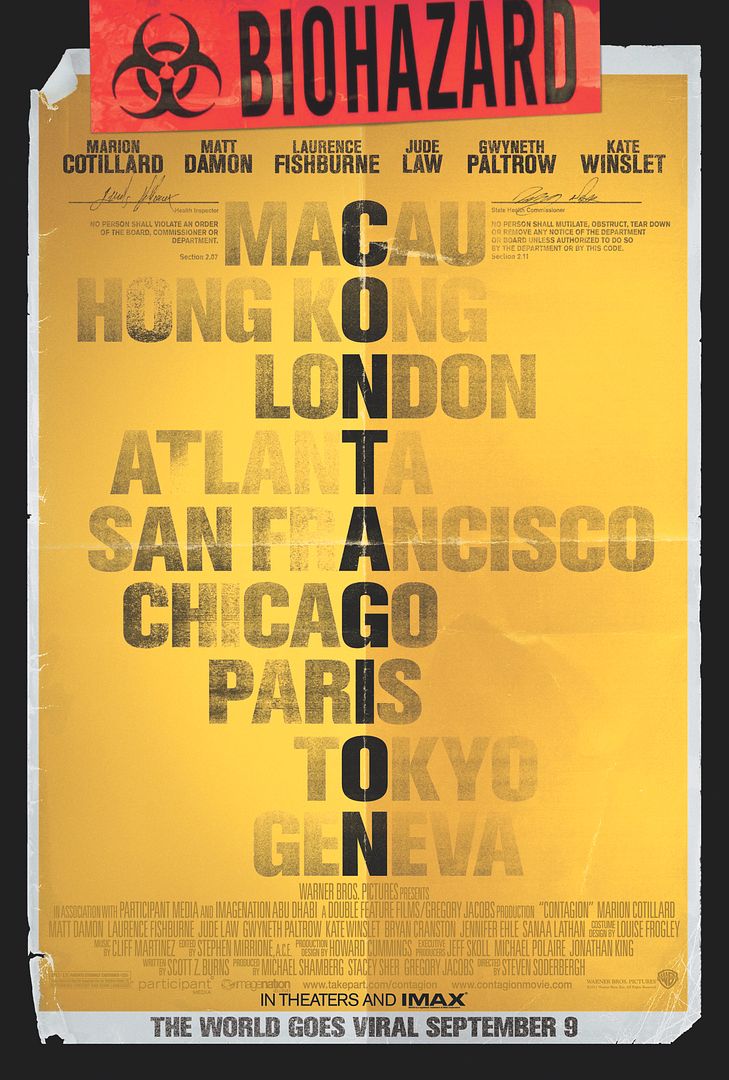
“Don’t talk to anyone, don’t touch anyone.” The austere slogan of the new film Contagion mirrors the gripping subject matter of the latest addition to the pandemic disaster movie club. One of the most science-oriented films to be released in the last few years, Contagion follows the path of several scientists, public health workers, and ordinary citizens as a full-fledged pandemic breaks out from an unknown virus. It explores scientific, moral, social and ethical questions for how we would prepare as a modern society if such a tragedy ever struck us. Additionally, Contagion is a cinematic ode to the visual and technical wonders of modern science, on full display here, both in the storyline and the beatifully-designed sets and costumes. For a full ScriptPhD review, including information on the behind-the-scenes science consultants that worked with the film’s producers to create scientific realism, click “continue reading” below.
REVIEW: Contagion
ScriptPhD Grade: B-
Contagion is one of those all-star Hollywood packages that seem too good to be true, and in this case it is. It’s clear that Oscar-winning director Steven Soderbergh (Erin Brokovich, Traffic, Ocean’s Eleven) paid attention to his advisors and took the time to get the science right, but perhaps he did so at the cost of any real drama making its way through the movie. The star-studded cast, which includes Matt Damon, Kate Winslet, Marion Cotillard, Gwyneth Paltrow, Jude Law and Lawrence Fishburne, may have delivered great performances in their original storylines, but the final cut is such an odd mash up of actionless sequences that it’s impossible to stay invested in any of their stories.

When Beth Ernhoff (Gwyneth Paltrow) returns home to Minneapolis, her bad case of let lag takes a perilous turn for the worse, and two days later, she is dead. To the shock and dismay of her grieving husband Thomas (Matt Damon), doctors don’t know the cause. Soon, the contagion spreads around our increasingly interconnected world, and a pandemic ensues. Scientists at the United States Centers for Disease Control soon take on deciphering the code of a rapidly mutating virus along with quelling the simultaneously rising tide of public panic. While Deputy Director Ellis Cheever (Laurence Fishbourne) allays public panic, Dr. Erin Mears (Kate Winslet) is sent directly into harm’s way. Concurrently, WHO Dr. Leona Orantes (Marion Cotillard) delegates solving the maze of clues that will eventually lead back to what ordinated the virus. While the doctors race time to find a cure, their efforts are thwarted by extremist activist blogger Alan Krumwiede (Jude Law), whose conspiracy theories that the public isn’t getting the whole story from the US Government, which sets of a wave of paranoia more dangerous than the virus itself.
Scientists rejoice! As a realistic depiction of a bird flu epidemic, Contagion attempts to right some of the scientific wrongs of Outbreak, which played more like a conventional zombie movie than a warning parable about the global reach of modern infectious diseases. Contagion was a difficult review for ScriptPhD to compose, because we’ve always marveled at the overt inaccuracies of its predecessor: an unauthorized person walking out of a secured government lab with a sample of a deadly virus (without gloves no less!), scientists and civilians walking into a Biosafety Level 4 lab without proper personal protective equipment, an unrealistic rate of viral spread, and we could go on and on…
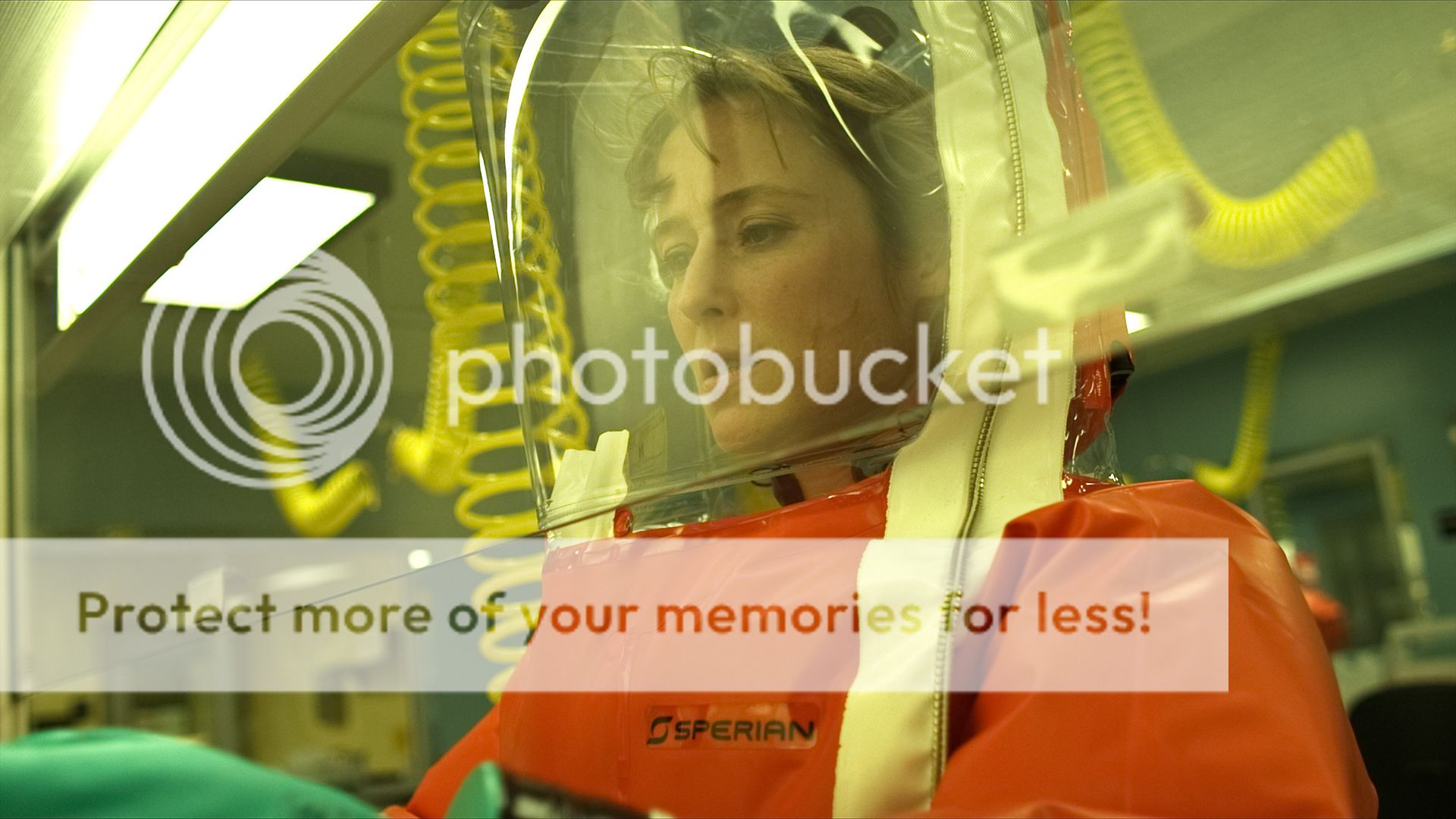
Thanks to the involvement of Participant Media and Warner Brothers, Contagion is a science film masquerading as a public service announcement to raise awareness about the possibility of such an outbreak and show that widespread panic is more dangerous than the virus itself. We applaud this goal. But too many minutes were invested in forcing actors to deliver technical language, along with clunky lines explaining their meaning. The balance between scientific accuracy and storytelling always has to ultimately tip in the balance of storytelling—the lynchpin of compelling films across all genres.
Showing scientists in realistic settings is noble and important, but lab work doesn’t qualify as action, and unfortunately for the viewing audience, that’s as good as it gets for this ‘action-thriller.’ As an example, Marion Cotillard’s Dr. Orantes is introduced in a tense moment of the film with a minute-long montage where we watch her take meetings—she’s literally sitting across a desk and talking to people—but we don’t get to hear what she’s saying because the awkward and uneven score plays over it. This is about the most boring visual montage I’ve ever seen in a movie. Then she gets thrown in a van and we don’t see her for another hour.
There’s a dark secret at the heart of how the virus afflicts Beth Ernhoff, but that drama isn’t allowed to play out in any meaningful way because there are five other plotlines to keep track of. Matt Damon gives some great scenes dealing with her death. But too many emotional punches were pulled: he skips over the death of his son to focus on somewhat-comically keeping his daughter locked away from the boy next door.

Fishburne and Winslet go a good job introducing the audience to the Center for Disease Control and the ridiculous pressures applied to government officials in their position, but don’t look for any happy endings in a movie this insistent on accurate depiction. Finally, Soderbergh is attempting to outdo himself in terms of the number of plotlines he can weave into a cohesive story, following up on his best director Oscar nod for Traffic. Where Traffic succeeded in integrating pieces into a cohesive whole, Contagion stretched my emotional attention span too thin. As the non-linear plot skips among all these amazing actors, the audience is constantly having to recall who they are and what they want.
This became comical at the wrong moment when the film returned to Cotillard’s character teaching schoolchildren in some Chinese village where she’s been held hostage. We are supposed to feel bad for these villagers, now that Marion has become one of them. But the theater was filled with a wave of frenzied whispers as entertainment bloggers consulted their neighbors on what she was doing there in the first place.
Speaking of writers and bloggers, Jude Law’s self-promoting freelancer Alan Krumwiede drew plenty of inside chuckles from the press screening crowd as a blogger seeking to profit from conspiracy theories about the government’s ties to pharmaceutical companies. His character is clearly a tongue-in-cheek homage to biological warfare NGO Sunshine Project muckraker and blogger Edward Hammond. This feeds into the film’s public service message to encourage us to trust our government in a big disaster situation, but it runs counter to the logic of movies that the little guy is corrupt and The Man is actually watching out for us.
If you’re interested in the subject matter or are fascinated by portrayal of science in film, Contagion is well worth the ticket price, but otherwise you’ll probably see it on Netflix in about three months. Contagion is hands-down the most realistic epidemic movie we’ve ever seen, but the film’s competing interests kept it from succeeding in any of its other lofty ambitions. Ultimately, it just wasn’t contagious enough.
Official Trailer:
Contagion goes into wide release on September 9, 2011 in theaters nationwide.
Natasha K. Griffith, MS, director of biosafety and biocontainment at the University of California at Los Angeles, and a world-renowned expert in training scientists to handle the most dangerous pathogens, consulted on all of the laboratory set design and high-tech suits that the actors wore during the filming. We had the opportunity to ask her a few questions about her work with Contagion.
ScriptPhD.com: Tell us a little bit about your expertise and specialty.
Natasha Griffith, MS: My expertise is in high containment laboratory design and management, primarily for Biosafety Level 3 and Biosafety Level 4 labs.
SPhD: Excellent. What kind of work, specifically, did you do for the film production crew? What were you asked to contribute?
NG: I was hired as a technical biosafety consultant. I helped with set design, that is making sure that the set was designed according to regulations, and to make sure that it matched actual BSL-3 and BSL-4 labs. Both are presented in the movie. I worked with the actors that were wearing containment suits at Level 4, and made sure that they knew what they were doing and felt comfortable in the suits. It can be a little difficult if you’ve never worn one of the suits before to just stick you into one and expect you to know what to do. I also oversaw the script, and made sure that all written lines were technically correct, and worked with the set designer to design the Level 3 and Level 4 suits. We also worked closely with the props department to make sure that the items used in the laboratory scenes and that the actors were working with were accurate research-wise. Before the filming even took place, I worked with the set and production designers to make sure that the labs were set up correctly and in place, including all the appropriate biosafety signs, and items in the freezers, and so on.
SPhD: Can you explain to people who are going to see the movie what the difference is between a Level 4 and a Level 3 lab?
NG: A Level 4 lab is truly what we call a “suit lab,” which is where the majority of this movie is presented. People are working in fully enclosed suits, so there’s no contact with the laboratory environment at all. All the air is provided through an external air line into the suit, so that people are not breathing in any air from the lab that might be contaminated with the agent they’re working with. It’s the highest possible level of containment that houses new agents, agents that have a very high mortality, and those that we don’t know much about or have a cure for. A Level 3 lab is one step down from Level 4, so there are different types of personal protective equipment that are used. In this case, the suits are not actually completely isolated from the laboratory environment, but the suits do filter the laboratory air through a special HEPA filter and eliminate any contaminants the scientist might have been exposed to. The agensts housed in a Level 3 lab are usually airborne [infectious disease agents], but we usually have some type of cure or treatment for them.
SPhD: Were there any moments during the filming of Contagion where you saw something terribly inaccurate being filmed and had to correct it? Can you give us examples?
NG: There were some details like this, but for the most part, the people I worked with were trying their best to be very accurate. Changing things wasn’t usually a big problem. A bigger challenge was explaining the highly technical information in such a way that the crew and actors could all understand what was going on and why certain things were important or something had to look a certain way. Usually, once we agreed on those big picture things, changing other small lab-specific details wasn’t a big problem.
SPhD: There have been a host of “pandemic” films that have come out in the last 10-15 years, dealing with global-scale pandemics, something really scary happening. And the fact is, we live in a global world, where in one day, you can travel across half the world (as is depicted in Contagion). The amount of stuff we touch in a given day is truly scary, which is another point the film touches on. In your opinion, having worked in this field, and all the things you’ve seen, is this storyline a Hollywood fantasy or something we should genuinely be investing our research money in and preparing for?
NG: Well, there’s always the possibility of a pandemic, and as you mentioned before, you truly can travel from one end of the world to the other in a very short period of time. So, anything that is new and emerging in Africa or Asia could be here tomorrow, so the risk definitely exists. Research money is obviously being invested already into preparedness, which is really the best way to prepare for such an event. I would say it’s definitely not a Hollywood fantasy. It is something that could happen, and something that we should keep in mind, but not something that we should be paranoid about. We have a lot of things that are always happening, and most of them don’t result in a huge pandemic. But you could say that one day, it might happen. One thing that really impressed me about Contagion was that they really, really tried hard to stay true to the science and what would happen if a pandemic actually happened.
The filmmakers of Contagion also consulted with Dr. Ian Lipkin, one of the world’s foremost microbe hunters and a professor at Columbia University’s Mailman School of Public Health. In addition to suggesting the movie’s plot might be triggered by an outbreak of a virus similar to Nipah, a deadly virus that has, on occasion, migrated from animals to people, Dr. Lipkin provided recollection of his work with the SARS epidemic in Beijing for the WHO and coached Contagion actors on the practices and procedures of scientific research. Here is a video of Dr. Lipkin discussing his work on the film, and why its broader message is so important for raising pandemic awareness and inspiring the next generation of science researchers:
~*Stephen Compson*~
************************
ScriptPhD.com covers science and technology in entertainment, media and advertising. Hire our consulting company for creative content development.
Subscribe to free email notifications of new posts on our home page.
]]>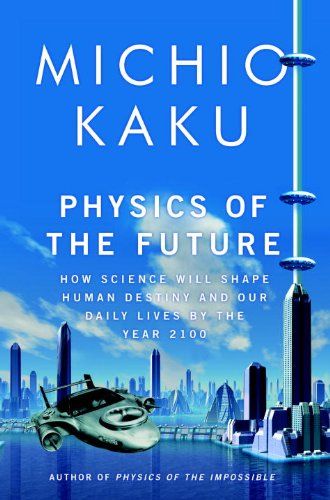
Dr. Michio Kaku recently consolidated his position as America’s most visible physicist by acting as the voice of the science community to major news outlets in the wake of Japan’s major earthquake and the recent Fukushima nuclear crisis. Dr. Kaku is one of those rare and prized few
who possesses both the hard science chops (he built an atom smasher in his garage for a high school science fair and is a co-founder of string theory) and the ability to reduce quantum physics and space time to layman’s terms. The author of Physics of the Impossible has also followed up with a new book, Physics of the Future, that aims to convey how these very principles will change the future of science and its impact in our daily modern life. (Make sure to enter our Facebook fan giveaway to win a free copy this week!) Dr. Kaku graciously sat down with ScriptPhD.com’s physics and astronomy blogger, Stephen Compson, to talk about the recent earthquake, popular science in an entertainment-driven world, and his latest book. Full interview under the “continue reading” cut.
Hang on Mom, I’m Building an Atom Smasher!
Michio Kaku’s multi-faceted success may seem to be, as Einstein said, the hallmark of true mastery over any advanced subject. But to fully appreciate the extent of Dr. Kaku’s gift for patient summary to the scientifically ignorant, ask yourself when you last saw an internationally respected physicist appear on Fox & Friends.
“It’s not that you want to be this kind of person when you’re a young kid,” the doctor tells me in the middle of his post-quake media marathon: “I’m sure that when Carl Sagan was a young astronomer, he did not say that he wanted to do this. When Carl Sagan was a kid, he read Science Fiction. He read John Carter of Mars and dreamed about going to Mars, that’s how he got his start. For me it was daydreaming about Einstein’s unified field theory. I didn’t know what the theory was, but I knew that I wanted to take a hand in trying to complete it. So you don’t really plan these things, they just sort of happen.”

Another breadwinning talent that sets him apart from high-level physics peers is that Dr. Kaku isn’t afraid to address technologies and phenomena that only exist in science fiction. His Physics of the Impossible is a scientific examination of phasers, force fields, teleportation, and time travel. One of the reasons ScriptPhD.com exists is that too many scientists will dismiss such concepts offhand, but Dr. Kaku has made a career of treating them seriously in published works, his radio broadcasts, and his TV show Sci Fi Science on the Science Channel. His latest book Physics of the Future: How Science Will Shape Human Destiny and Our Daily Lives by the Year 2100 puts forth the bold argument that technology will imbue men and women with godlike powers in less than a hundred years, with specific examinations of the current field and estimated times of arrival on things like artificial intelligence, telekinesis (through implanted brain sensors) and molecular medicine that will dramatically extend the human lifespan.
ScriptPhD: Most scientists are very cautious about making the kinds of predictions that you do in The Physics of the Future. Why do you think it’s important for scientists to address the unknown?
Michio Kaku: Because the bottom line is the taxpayer has to decide what to support with their tax money. With funds being so low, we scientists have to learn how to sing for our supper. After World War 2, we gave the military the atomic bomb. They were so impressed they just gave us anything we wanted: accelerators and atom smashers, all sorts of high-tech stuff. And then with the Cold War, the aerospace program pretty much got whatever it wanted. Now we’re back to normal: lean times where every penny is pinched, and we have to realize that unless you can interact with the taxpayer, you’re going to lose your project.
Like what happened in 1993, we lost the Supercollider. That I think was a turning point in the physics community. This eleven billion dollar machine was lost and it went to Europe in a much smaller version called the Large Hadron Collider. We failed to convince the taxpayer that the Supercollider was worthwhile, so they said, ‘We’re not going to fund you.’ That was a shock. When it comes to non-military technology, where the public definitely has a say in these matters, unless we scientists can make a convincing argument to build space telescopes and particle accelerators, the public is gonna say, ‘These are just toys. High tech toys for scientists. They have no relationship to me.’ So it’s important for very practical reasons, if only to keep our grants going, that we scientists have to learn how to address the average person. President Barack Obama has made this a national priority. He says, ‘We have to create the Sputnik moment for our young people.’ My Sputnik moment was Sputnik.
Chasing Martian Princesses
SPhD: What could be the Sputnik moment for the children of today?
MK: We have the media, which is such a waste in the sense that you can actually feel your IQ get lower as you watch TV. But there is the Discovery Channel and the Science Channel and different kinds of programming where you can use beautiful special effects to illustrate exploding stars and Mars and elementary particles. This didn’t exist when I was young. There were no Television outlets. It was just dry, dull books in the library that talked about these things. With such gorgeous special effects on cable television to explain these things, there is no excuse. These are cable outlets where we can reach the public, millions of them, with high technology.
I had two role models when I was a kid. The first was Albert Einstein. I wanted to help him complete his unfinished theory, the unified field theory. But on Saturdays I used to watch Flash Gordon on TV. I loved it! I watched every single episode. Eventually I figured out two things. First: I didn’t have blond hair and muscles. And second, I figured out it was the scientist who drove the entire series. The scientist created the city in the sky, the scientist created the invisibility shield, and the scientist created the starship.
And so I realized something very deep: that science is the engine of prosperity. All the prosperity we see around us is a byproduct of scientific inventions. And that’s not being made clear to young people. If we can’t make it clear to young people they’re not going to go into science. And science will suffer in the United States. And that is why we have to inspire young people to have that Sputnik moment.
SPhD: So you think that science fiction is a good avenue for bringing people into science and getting them excited about it?
MK: We scientists don’t like to admit this, it’s almost scandalous. But it’s true. The greatest astronomer of the twentieth century became the greatest astronomer of the twentieth century because of science fiction.
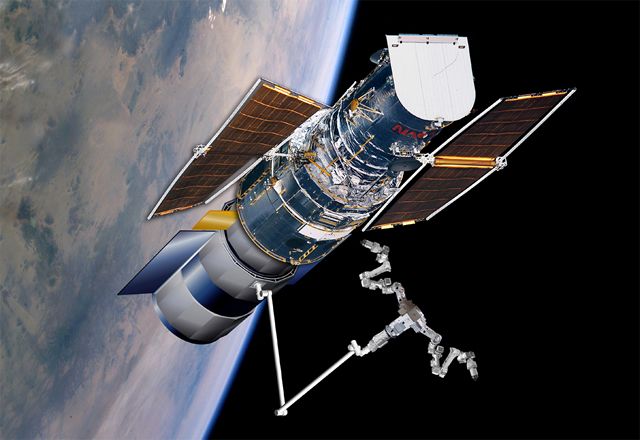
His name was Edwin Hubble. He was a small country lawyer in Missouri and he remembered the wonderment and passion he felt as a child reading Jules Verne. His father wanted him to continue in law; he was an Oxford scholar. But Hubble said no. He quit being a lawyer, went to the university of Chicago, got his PhD and went along to discover that the universe was expanding. And he did it all because as a child he read Jules Verne.
And Carl Sagan decided to become an astronomer because of Edgar Rice Burrough’s John Carter of Mars series, because he dreamed of chasing the beautiful martian princess over the sands of mars.
Here’s what I don’t like about modern science fiction. A lot of the novels are sword and sorcery. Instead of creating a society for the future, they’re going back to barbarism, they’re going back to feudalism and slavery. Once in a while, yeah, I like to read it, but I get the feeling that it’s not pushing civilization forward.
When I was a young kid , it was called hard science fiction – rocket ships, journeys to the unknown, incredible inventions like time machines and stuff like that, it was less sword and sorcery, less about having big muscles chasing beautiful women and killing your enemies, less Conan the Conquerer. Science fiction stories that talk about the future are much more uplifting for young kids and also point them in the right direction. Sword and sorcery is not a good career path for the average kid.
SPhD: On average, what do you think of the modern media’s treatment of physics?
MK: The Discovery Channel and the Science Channel are one of the few outlets where scientists can roam unimpeded by the restraints of Hollywood, which says you have to have large market share and you can’t get big concepts to people. And one person who paved the way for that was Stephen Hawking and I think that we owe him a debt in that he proved that science sells.
I remember when I wrote my first book, the publishing world said ‘Look, science does not sell. You’re going to be catering to the select few. It’s not a mass market we’re talking about.’ But there were already indications that that wasn’t true. Discover magazine, Scientific American, they both have subscriptions of about a million. And then of course when the Discovery Channel took off, that really showed that there was something that the networks did not see, and it was right in front of their face. And that was science and documentary programming.
It was always there – like Nova was a top draw for PBS – but the big networks said ‘It’s too small, it’s underneath the radar.’ So then with cable television, all the things that used to be under the radar, jumped to the forefront, Stephen Hawking outsells movie stars.
And I think that really shows something. It’s a hunger for people out there to know the answers to these cosmic questions, like what’s out there? What does it all mean? How do we fit into the larger scheme of things in the universe? There’s a real hunger for that, and of course if you watch I Love Lucy all day, you’re not gonna get the answer.
Cavemen, Picture Phones, and Horses
SPhD: On the other hand, there is a basic human instinct to resist scientific and technological change. In your book you describe this as the Caveman Principle:
“Whenever there is a conflict between modern technology and the desires of our primitive ancestors, these primitive desires win each time… Having the fresh animal in our hands was always preferable to tales of the one that got away. Similarly, we want hard copy whenever we deal with files. That’s why the paperless office never came to be… Likewise, our ancestors always liked face to face encounters….By watching people up close, we feel a common bond and can also read their subtle body language to find out what thoughts are racing through their heads…So there is a continual competition between High Tech and High Touch…we prefer to have both, but if given a choice we will choose High Touch like our caveman ancestors.”
I wondered if those weren’t generational changes that we might see come to pass in children who have grown up reading and socializing through screens.
MK: Yes slowly. There is, of course, latitude in the caveman principle. More and more people are warming up to the idea of picture phones. Picture phones first came out in the 1960’s at the World Fair, but you couldn’t touch
them with a ten foot pole. People didn’t want to have to comb their hair every time they went online. Now people are sort of getting used to it. It varies, like for instance now we have more horses than we did in 1800.
SPhD: Horses?
M: Yeah! Horses are used for recreational purposes. There are more recreational horses today than there were horses for a small American population in 1800.
Take a look at theater. Back in those days, people thought that theater would be extinguished by radio, then they thought television would replace radio, then they thought the internet would replace television, which would replace radio, movies, and live theater. The answer is we live with all of them.
We don’t necessarily go from one media or one thing to the next, making them previous and obsolete, there is a mix. You could become very rich if you know exactly what that mix is, but that’s the way it is with technology, we never really give up any old technology, we still have live theater on Broadway.
The Silicon Wasteland and Artificial Intelligence
SPhD: Regarding the creation of Artificial Intelligence in The Physics of the Future, you talk about the computer singularity and Moore’s law breaking down in about ten years—
MK: Silicon power will be exhausted for two reasons: first, transistors are going to be so tiny, they’ll generate too much heat and melt. Second, they’re gonna be so tiny they’re almost atomic in size and so the uncertainty principle comes in and you don’t know where they are, so leakage takes place.
SPhD: In the book you are very cautious in your treatment of quantum computers (Presumably the replacement when silicon breaks down) and how long it’s going to take us to develop them – what’s holding that technology back and why shouldn’t we think that they’ll replace silicon right away?
MK: Quantum computers remedy both those defaults because they compute on atoms themselves. The problem with quantum computers is impurities and decoherence. For quantum computing to work, the atoms have to vibrate in phase. But when you separate them, disturbances take place. This is called decoherence, when they vibrate out of phase. It is very easy to decohere atoms that are coherent. The slightest breath, a truck traveling by, even interference from a cosmic ray will ruin the coherence between atoms. That’s why the world record for quantum computing calculation is 3 times 5 is 15 – it sounds trivial, but go home tonight and try that on 5 atoms, take 5 atoms and try to multiply 3 times 5 is 15 – it’s not so easy.
SPhD: What is your definition of artificial intelligence?
MK: Well, that gets us into consciousness and stuff like that. My personal point of view is that consciousness is a continuum, and the same with intelligence. I would say that the smallest unit of consciousness would be the thermostat. The thermostat is aware of its environment – it adjusts itself to compensate for changes in the environment. That’s the lowest level of consciousness – beyond that would be insects, which basically go around mating and eating by instinct and don’t live very long. As you go up the evolutionary scale, you begin to realize that animals do plan a little bit, but they have no conception of tomorrow.
To the best of our knowledge, animals do not plan for tomorrow or yesterday, they live in the present. Everything is governed by instinct, so they sleep, they wake up, but they’re not aware of any continuity – they just hunt or whatever day by day. We’re a higher level of intelligence in the sense that we are aware of time, we’re aware of self, and we can plan for the future. So those are the ingredients of higher intelligence. Since animals have no conception of tomorrow to the best of our knowledge, very few animals have conception of self. For example, you get two fighting fishes and put them together, they’ll try to tear each other apart. When you put them next to a mirror, they try to attack the mirror – they have no conception of self. So we’re higher up. So artificial intelligence is the attempt to use machines to replicate humans.
SPhD: Do you think we’ll need to completely model human intelligence in order to create a satisfactory artificial one?
MK: No, but I think we made a huge mistake. Fifty years ago, everyone thought that the brain was a computer. People thought that was a no-brainer, of course the brain is a computer. Well, it’s not. A computer has a Pentium chip, it has a central processer, it has windows, programming, software, subroutines, that’s a computer. The brain has none of that. The brain is a learning machine.
Your laptop today is just as stupid as it was yesterday. The brain rewires itself after learning – that’s the difference. The architecture is different, so it’s much more difficult to reproduce human thoughts than we thought possible. I’m not saying it’s impossible, I think maybe by the end of the century we’ll have robots that are quite intelligent. Right now we’ve got robots that are about as intelligent as a cockroach. A stupid cockroach. A lobotomized, stupid cockroach. But in the future, you know, I could see them being as smart as mice. I could see that. Then beyond that, as smart as a dog or a cat. And then beyond that, as smart as a monkey. At that point we should put a chip in their brain to shut them off if they have murderous thoughts.
SPhD: The landscape for artificial intelligence seems very fragmented – the research branches in a lot of different directions. Do you think there will be some sort of unification for a grand theory of A.I.?
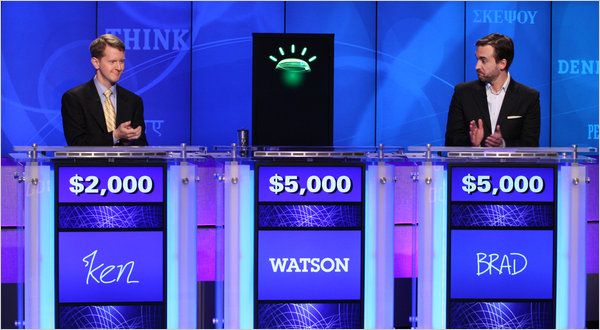
MK: It’ll be hard, because everyone is working on one little piece of a huge puzzle. Take a look at Watson, who defeated two Jeopardy experts – after that the media thought, ‘Uh oh the robots are coming, we’re gonna be put in zoos, and they’re gonna throw peanuts at us and make us dance behind bars.’
But then you ask a simple question. Does Watson know that it won? Can Watson talk about his victory? Is Watson aware of his victory? Is Watson aware of anything? And then you begin to realize that Watson is a one-trick pony. In science we have lots of one-trick ponies. Your hand calculator calculates about a million times faster than your brain, but you don’t have a nervous breakdown thinking about your calculator. It’s just a calculator, right? Same thing with Watson – all Watson can do is win on Jeopardy. So we have a long ways to go.
Burning Books and Teaching Principles
SPhD: You also talk about education and how the United States will be coming to the end of a brain drain on other countries because of our unmatched universities and the so-called genius visa. You claim that in order to maintain our position in the global economy, we’ll need to produce more qualified graduates from primary education. What changes you think need to be made to our education system to produce those graduates?
M: I don’t wanna insult them or anything, but education majors have the lowest scores among the different professionals on the SAT test. The brightest and most vigorous, the most competent of our graduates do not go into education.
In Japan for example, a sensei is considered very high in society. People bow before them—they give them presents and so on. In America we have the expression, ‘Those who can, do. Those who can’t, teach.’
First, we have to raise the education level of the education majors, then we have to throw away the textbooks. The textbooks are awful. My daughter took the Geology Regents exam in New York State, and I looked at the handbook – I felt like ripping it apart. Really stomping on it, burning it. It was the memorization of all the crystals, the memorization of all the minerals.
In the future you’ll have a contact lens with the internet in it – you’ll blink and you’ll see as many minerals as you want. You’ll blink and you’ll see all the crystals. Why do we have to memorize these things and force students to learn it? Then my daugher comes to me and says something that really shook me up, she comes up to me and says, ‘Daddy, why would anyone want to become a scientist?’
I really felt like ripping up that book. That book has done more to crush interest in science – that’s what science curriculum does, science curriculum is designed to crush interest in science. Science is about principles. It’s about concepts. It’s not about memorizing the parts of a flower. It helps to know some of these things, but if that’s all you do that’s not science, science is about principles and concepts. So we gotta change the textbooks.
SPhD: Given these contact lenses, or any form of uninterrupted access to the internet where we can access information like that and don’t need to memorize anything anymore, what should we be training young people to do?
MK: First they have to know the principles and the concepts, and they have to be able to think about how to apply these principles and concepts. For example, how many principles and concepts are there in geology? Here’s this big fat handbook, memorize this, memorize this, it goes on and on and on, right? But what is the driving principle behind geology?
Continental drift, the recycling of rock, that’s what they should be stressing. What’s the organizing principle of biology? It’s evolution. What’s the organizing principle of physics? Well, there’s Newtonian mechanics, but then there’s relativity and the quantum theory behind that. So we are talking about really a handful of principles, but you’d never know it taking these courses, because they’re all about memorizing stupid facts and figures.
Let me give you another example. I teach astronomy this semester at the college [Dr. Kaku is a professor of theoretical physics at the State University of New York]. Astronomy books are written by astronomers. I have nothing against astronomers, but they’re bug collectors. Every single footnote, every single itsy bitsy thing about this star, that star, this planet – you miss the big picture. So when it comes time for final examinations, I tell the students:
‘I wanna talk about principles.’ galactic evolution, that’s what I teach the kids about. I don’t teach them to memorize the moons of Jupiter. I don’t even know the moons of Jupiter, I could care less, but that’s what an astronomy test was a generation ago.
SPhD: Would you say that we need to educate humans from the top down and machines from the bottom up?
MK: I think that with machines we should go top down, bottom up, both. And maybe we’ll meet in the middle someplace. That’s how people are, think about it. When you’re very young you learn bottom up, you bump into things. But by the time you’re in school you learn top down and bottom up. Top down because a teacher stuffs knowledge into your head and bottom up cause you bump into things, you have real-life experiences. People learn both ways, but in the past, we’ve only tried to stress top down, realizing that bottom up is common sense.
Physics of the Future is a fantastic read for anyone interested in what’s in store for us over the next century (yes, this time there really will be flying cars). These aren’t Dr. Kaku’s pet predictions, but extrapolations based on the current cutting edge from the experts in every involved discipline. Readers will be shocked at how close these tantalizing technologies really are, and thrilled at the realization that most of us will live to see this amazing future.
Grateful thanks to Dr. Michio Kaku and Josh Weinberg and Joanne Schioppi at The Science Channel for facilitating this interview and our book giveaway. Catch Dr. Kaku on The Science Channel’s Sci Fi Science and read his two books, which are both available for purchase.
~*Stephen Compson*~
***********************
ScriptPhD.com covers science and technology in entertainment, media and advertising. Hire our consulting company for creative content development.
Subscribe to free email notifications of new posts on our home page.
]]>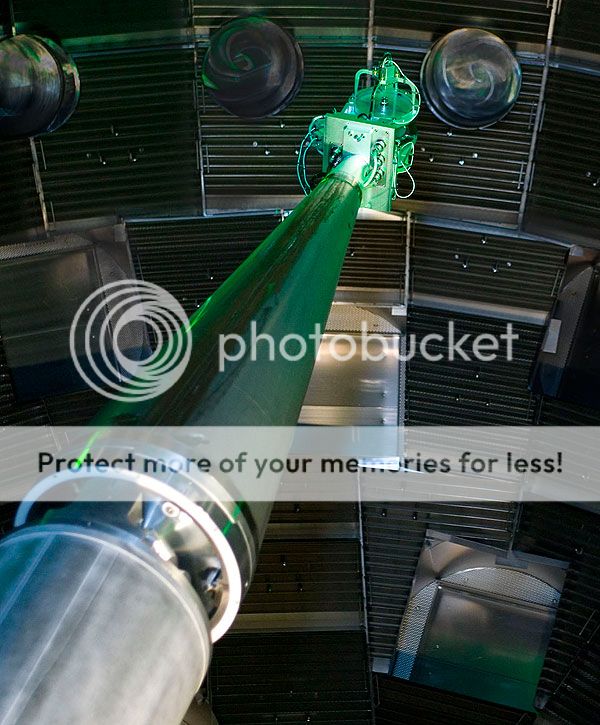
You can always tell you’ve gone too far when you reach the wind farms. They populate the barren wastes of California’s northern interior, rows of them spinning atop camel-haired hills starved of moisture to slake the thirst of the Los Angeles glitterati. These motionless pinwheels are an ironic green afterthought to the ecological disaster that embraces the Interstate-5 freeway: now that we’ve created the dust bowl we may as well use the wind to power our air filters. There’s more than wind and dust out here. This is where they put the kinds of facilities the government doesn’t want people snooping around in. Lawrence Livermore National Laboratory is one of them—a secretive development center for our nation’s nuclear arsenal during the Cold War. Here in Livermore, the world’s finest physicists are on the verge of a breakthrough that could power entire cities on a bathtub full of water. The National Ignition Facility, also known as the world’s largest laser, is on the cusp of achieving the first break-even nuclear fusion reaction. NIF is the U.S. Department of Energy’s Sagrada Familia. If successful, the four billion dollar facility will be the first ever to demonstrate Ignition: a fusion reaction that releases more energy than was put into it. The energy, national security, economic and environmental ramifications for the United States, if not the world, would be staggering. ScriptPhD.com’s Stephen Compson gained ultra-exclusive access to the normally reclusive facility, including tours, interviews, and a peek at the lasers that could hold the key to the United States’s global rebirth. With nuclear fusion on the brink of break-even, Stephen recounts we tour the world’s next scientific revolution.
The Photon Valley
Livermore is not so much a city as it is a byproduct of the lab at its center. This small suburban community lies halfway between San Francisco’s Bay Area and the Interstate 5 that allows truckers a north-south passage between the “Two Californias.” They call it The Photon Valley, the world capital of laser technology and all things light-related. Moth-like high-tech subcontractors orbit the facility’s perimeter. Charon Sue Wollard is Livermore’s second Poet Laureate. Her poem Steller Gest hints at the secrets locked away in the cathedral of optics:
amid the shadows of the Earth
while a future barely glimpsed
is in a chamber being birthed”
I check into a room that smells like a Pine-Sol explosion and cruise the two main drags looking for a meal. A pretty girl takes my order at a pizza place, and I realize for the first time what a physics town this truly is. Her eye shadow has been cross-sectioned into bandwidths, showing five different colors on each eyelid. It is a cosmetic display of the visible light spectrum. She smiles and asks if I’d like a beer.
Fusion is the process by which two atomic bodies, driven together by an overwhelming force, merge to become one heavier nucleus. It is the reverse of fission, the splitting process that gave us the atomic bomb and the conventional nuclear reactor. An atomic act of coupling, fusion powers our sun and every other light in the night sky. At the National Ignition Facility here in Livermore, scientists and engineers stand at the threshold of tapping into that process to create a limitless supply of clean energy. When the stars burn out, we’ll make our own.

The Birth of a Star
The car is completely covered in bird crap. This isn’t just one or two droppings caked onto a dirty hood, but a carpet-bombing by a flock of irritably-boweled miscreants. Lynda, the public affairs officer assigned to chaperoning me through the facility, smiles apologetically and gestures toward the culprits in the dense trees that loom over the parking lot.
Like a quiet family home in mid-Los Angeles, the Livermore Lab hides from prying eyes with a protective wall of foliage that makes it look more like a nature preserve than a nuclear weapons facility. But behind the trees they have plenty of barbed wire and guards armed with assault rifles. I finger the clearance pass with my photo on it and thank her for the souvenir. She looks puzzled, “You won’t be allowed to keep it.” Bruno Von Wonterghem is exactly the sort of Germanic super-scientist you’d imagine running operations at the world’s largest laser facility. His accent lends an easy everyday quality to words like laser, optics, and Neodymium. He has the propensity to trail off into a mumble that could fill an entire page, like he’s been talking about the laser’s attributes merely for his own benefit. Bruno has been working on laser systems at the lab for almost two decades. Every time I ask a question this strange light comes into his eyes, as though he’s realizing for the first time that there are people in this world who don’t know about the National Ignition Facility.

From the outside, the building doesn’t quite look real. It’s glossy, like one of those photos a developer might put up in front of a vacant lot to convince people that something could be built there. I’ve been trying to get into this facility for over a year, and to my disappointment it looks exactly like the pictures. Most of the facility’s iconic equipment is on display in the front lobby, and the walls throughout are lined with posters explaining how everything works. The whole thing screams field trip, and I’m starting to wonder if there is actually any science that takes place here. Then they show me the laser bays.

Every article you will ever read about the National Ignition Facility measures the size of its laser bays in terms of football fields (four). It’s difficult to get a feel for the scale from the picture, because this is only one of two laser bays and what you don’t realize looking down on it is that the whole system is suspended a story above the ground, putting us three stories up. They do that because any replacement modules have to be loaded from underneath in pre-assembled clean rooms so that any outside particles will fall out of the system.

After giving me a minute to ogle, Bruno clears his throat. “The Facility is essentially an energy concentrator in time and space. It takes about sixty seconds to charge up the capacitor bank with six megawatts, but the laser releases that energy in a very short amount of time: billionths of a second. Those six megawatts are concentrated by over fifteen orders of magnitude, more power than the entire United States electrical grid.” The cool thing about lasers is that they have an unlimited threshold for delivering power. Photons, the packets that physicists use to quantify light, occupy no space, so you can pack an unlimited number of them into as focused a path as your lenses allow.
The charge process concentrate the lasers through time, and the lenses concentrate them through space. Each of the tubes acts like a telescope, converging NIF’s 192 beams onto a single capsule the size of a vitamin, gaining another nine orders of magnitude in the process to create temperatures hotter than the inside of the sun.
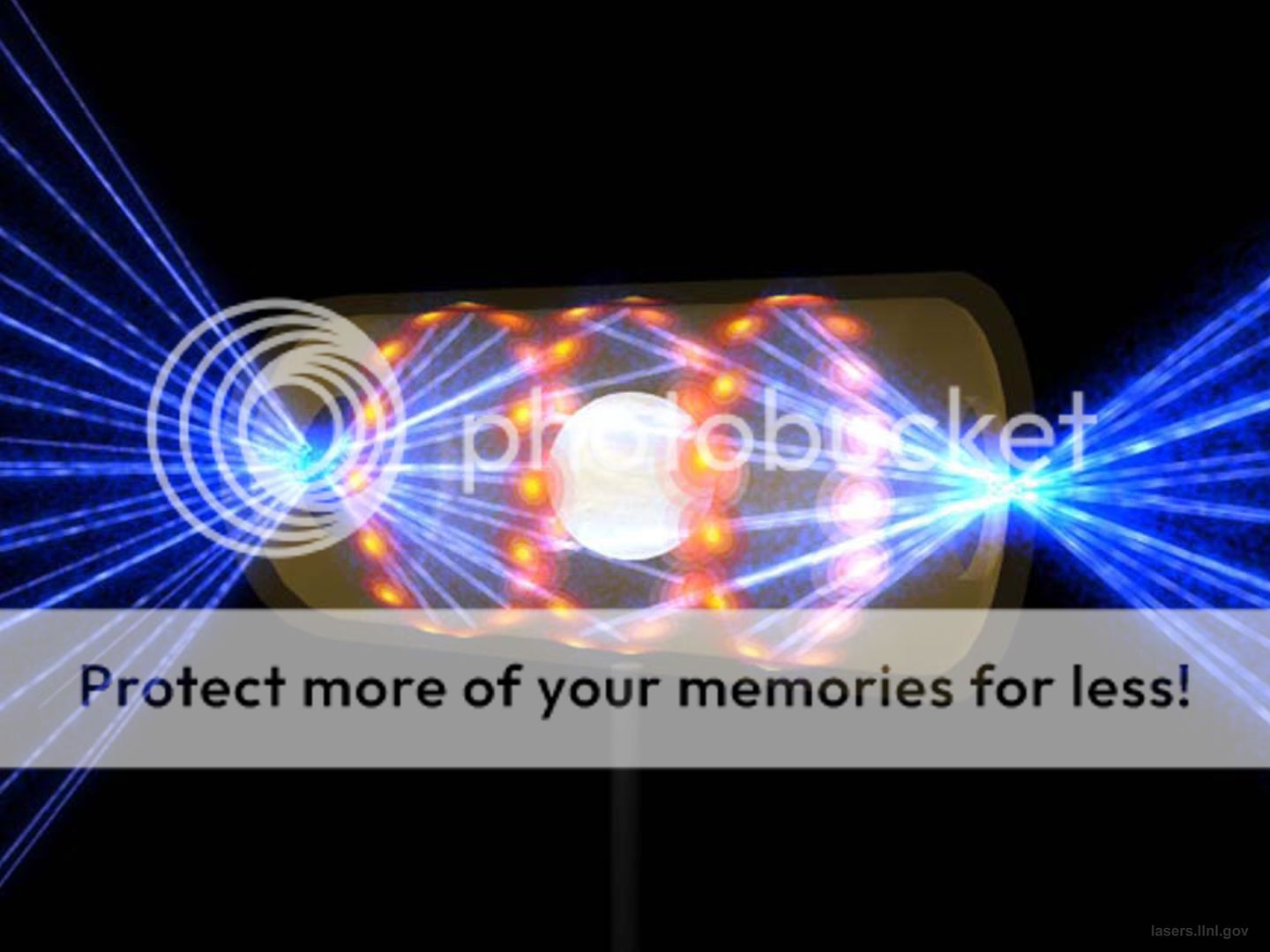
At the molecular level, heat causes vibration. The hydrogen ions in the fuel capsule are both positively charged, so they magnetically repel one another. However, the supercharged laser creates a perfectly symmetrical layer of plasma around the target. There’s nowhere for the ions to run, and as they heat up and accelerate to over a million miles per hour, the two cores inevitably fuse to become a hydrogen atom, releasing some of their mass as energy in the form of neutrons. Each laser bay contains 96 beams, one in each steel tube. Thick black high-voltage cables snake along the outside delivering power to the amplifiers. The tubes are filled with Argon gas because air reacts with lasers and impedes their progress. Aside from the amplifiers, the lasers also pass through pink slabs of neodymium that add juice to the discharge. The shot bounces through the entire array four times before it enters the switchyard into the target bay.
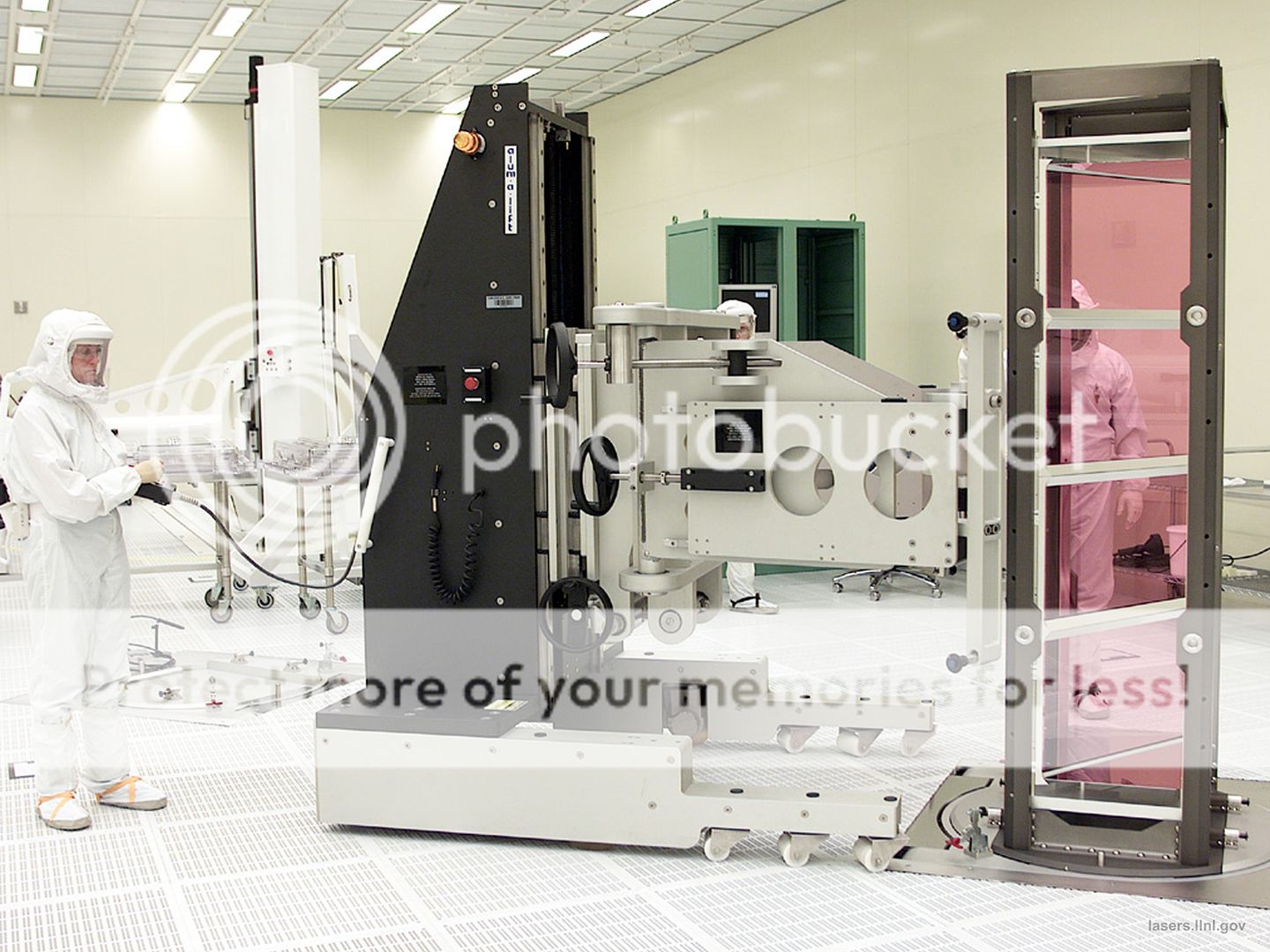
This is the world’s largest optical system. There are over 70,000 large optical controllers and 30,000 smaller optics. As we look over it all from the third floor, Bruno sniffs, “If you could look through all these tubes and strip away all this steel, you would find a sea of optical elements. It would be beautiful. Right now, it just looks like tubes.”
Between the Conception and the Creation

Every shot starts in the Oscillator Room, which is a somewhat disappointing set of server-like cabinets containing the three oscillators that send out the initial pulse to the preamplifiers. This starting pulse is only a billionth of a joule, or 1/160th the kinetic energy of a flying mosquito. A fairly humble beginning for a star’s birth. They use the three oscillators in tandem to fine-tune the timing of the pulse down to a few trillionths of a second. The oscillators run constantly, but only one of these pulses will enter the amplifiers to begin powering up for a shot. A large red counter keeps track of all pulses that pass without notice through the fiber-optics, unable to reach their full potential in the adjacent laser bays.
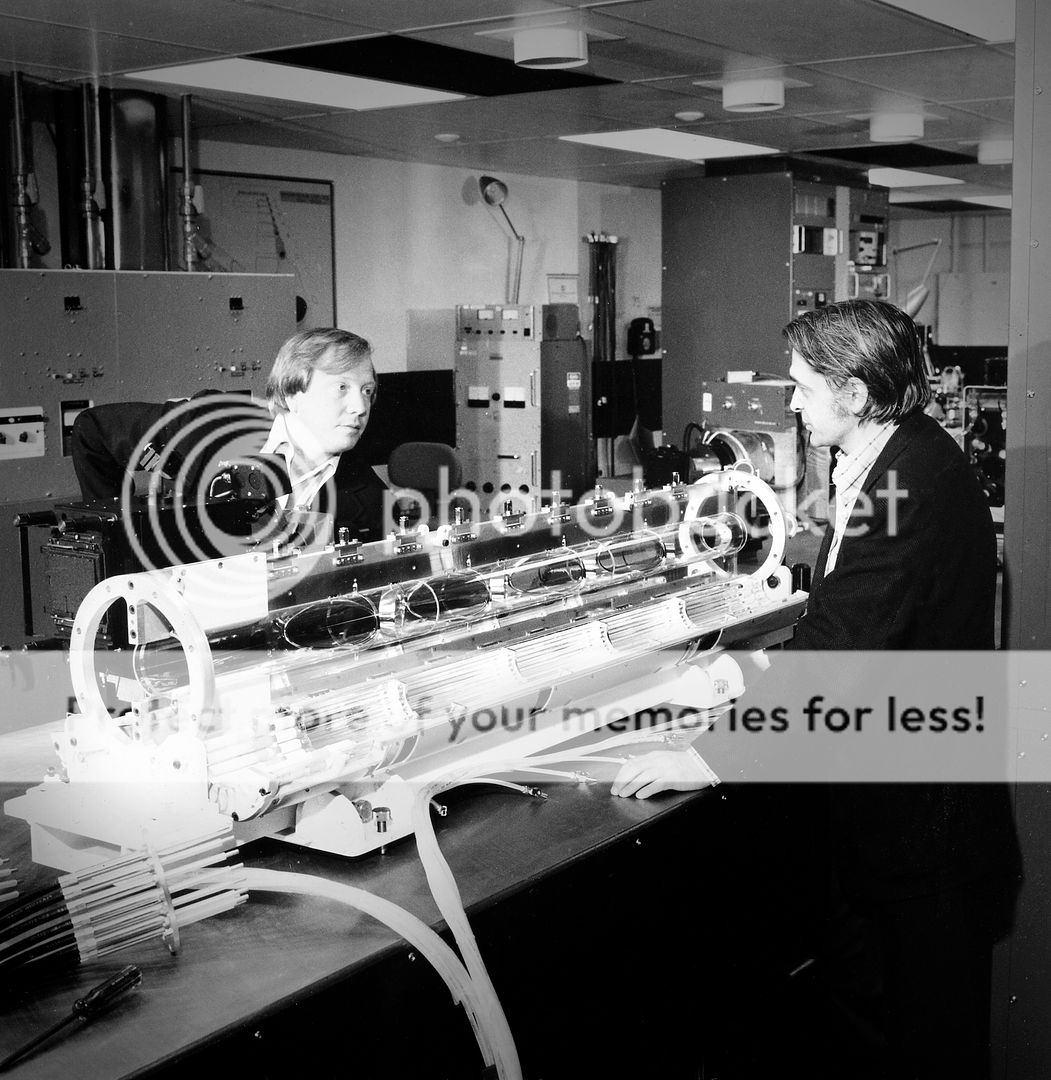
In 1957, John Nuckolls began investigating peaceful applications of nuclear weapons technology. He proposed a novel scheme: the implosion of a Deuterium-Tritium (hydrogen isotopes) fuel capsule inside a tiny holhraum driven by an external energy source (refer to above graphic). This is the same scheme NIF uses today, but at the time when Nuckolls proposed it the laser had not yet been invented, so he considered other exotic power sources like particle accelerators, plasma guns, and hypervelocity pellet guns, which sound suspiciously like glorified BB guns.
The reaction that takes place at NIF today is almost identical to the one Nuckolls designed in the 60s, but the physicists needed a laser system capable of generating a pulse hotter than the core of our sun to achieve ignition. First they built the SHIVA laser, named for Oppenheimer’s proclamation that he had become the destroyer of worlds after unveiling the atomic bomb. SHIVA was followed by NOVA, NIF’s predecessor and the first laser system Bruno worked on at the facility. In late 2009, almost fifty years after the idea was conceived, NIF successfully demonstrated the temperatures necessary for energy gain ignition. “It was so much bigger than any of us ever imagined,” Bruno reflected. “When we bring in the original scientists to look at the target bay, they sort of look around in awe and say, ‘We can’t believe this is what we asked for.’”


The target chamber is a 10-meter diameter aluminum sphere with laser tubes sprouting from its surface. From the outside, it looks like one of those alien objects from Contact or Sphere. It spans three stories of the facility, so you can only ever look at it from above or below. We stand on the third floor watching a crew of workers install some newly hardened diagnostic equipment. They’ve spent the past six months preparing the target chamber to absorb the massive amount of energy released by the fusion reaction. The entire chamber is now surrounded by a concrete and boron barrier two meters thick. In the LIFE facility, a commercial power plant designed to actually generate electricity, the neutrons will be absorbed by a mantle of liquid salts that transfer their kinetic energy to heat energy which drives a conventional steam generator. However, because NIF is an experimental facility where they actually need to observe the reaction, its physicists were presented with the challenge of preparing cameras that could withstand the bombardment, since neutrons lay waste to electronics.
The density of the imploding target is so high that normal x-rays can’t penetrate the implosion’s surface, so they concentrate four x-ray beams to over a Petawatt, which is a quadrillion watts (yeah, real number). The reaction itself is only a tenth of the size of a human hair, and it boggles even the scientists who work there that they have an x-ray powerful enough to observe it. They call this camera Dante, “because it looks into the mouth of hell.” Despite the incredibly powerful forces at work, Inertial Confined Fusion is safer than any of the power-generating technologies that have preceded it. The key thing to remember is that the reaction is an implosion, not an explosion. If anything goes wrong, the whole thing collapses on itself and nothing happens. The worst thing that can happen is all the fuel gets consumed and we’re out one more capsule. There’s no possibility of a catastrophic meltdown like Three Mile Island or Chernobyl. Lynda deals with this line of questioning all the time: “People hear that NIF generates temperatures hotter than the sun and that it creates a miniature star and they wonder how the whole facility doesn’t melt down. But we’re talking about an implosion, with an incredibly small scale, for only a few billionths of a second. It’s no different than a supernova, the physics are all the same, but the scale’s a bit smaller.”

Holhraum is the German word for “hollow room.” It has been mostly analogized to a pill capsule, in reference to its size and shape. Its role is to act as an x-ray oven, containing the plasma generated around the target pellet and acting as a mold for the fusion reaction’s symmetry. The holhraum contains the fuel pellet made up of the hydrogen isotopes Tritium and Deuterium. There’s no danger of scarcity with these two elements: Tritium is derived from the relatively common Lithium and Deuterium comes from plain old water. Another advantage to fusion is that there’s no waste created, at all. Everything is consumed by the reaction, leaving behind no toxic radiation or weaponizable elements. In fact, physicists can use facilities like NIF to dispose of the nuclear waste from the previous generation of fission reactors, rendering the arguments about Yucca mountain or blasting it into space completely moot.

The shot director begins the countdown, and alarms sound throughout the facility. Daylight hours at the facility mostly consist of construction and maintenance work, they fire the lasers at night. There are only twenty people in the facility during a shot, and they’re all here in the control room, but they have the alarms just in case. The countdown is four minutes, which seems like an incredibly long time. Nearly all of the process is controlled by computers, a necessity for the minute level of control required to achieve symmetry. The control room looks a lot like NASA’s Mission Control. They like to hire nuclear submarine captains as shot directors, because of the rigidity in operations requirements. “We can train them with the technical knowledge, but having that operations experience from a submarine where things are going on all around you is essential. There’s a lot of action during a shot, but each one can take up to twelve hours. It’s like loading a new missile every day.”
As we reach the final few seconds of the countdown, I look around nervously. The overhead lights flash, and that’s it. No sound effects, no shaking. I have to ask if it worked. The only noise comes from the physicists next door scrambling to be the first to retrieve the data. Lynda leans over, “When you take the amount of shots fired in an entire year, where each one only takes a fraction of a second, it’s almost like this thing is never really on.”
Countdown to Ignition
The National Ignition Campaign coincides with football season, but the stakes are a little higher. Ignition is the validation of fusion as a viable energy source, the point at which the critics are silenced and the rest of the world scrambles to duplicate the feat. “It’s going to be incredible, standing room only. There’s people lining up around the world that want to be here for that event. Every milestone along the way has been a major event, when we went from two to four lasers it was a major event. Now we have 192. And it’s all leading up to the ignition.” The question they must get tired of hearing is: when? “September, October. There’s a few [target] options we have, a plastic capsule, a beryllium capsule, a diamond capsule.” I ask Bruno which one he thinks will do the trick. It’s important not to underestimate the technological perfection required to achieve the symmetry necessary for the ignition. Every aspect of the shot must be analyzed and optimized to an order of precision never before achieved. With all that said, he doesn’t see any reason why the plastic capsule won’t get the job done.
I have to press: “The plastic capsule, that’s going to be the one?” Bruno replies with a tremor in his voice. Like the girl who’s fallen for too many bad boys, he’s been hurt before, “I believe that will be the one, yes.”
Are you ready for some Physics?
The above title sounds a lot more enticing if you sing it to the Monday Night Football theme song. There’s no good reason why I should be allowed into a nuclear weapons lab. I’m nobody, another starving bookworm with a taste for Faulkner and single barrel scotch. All I can surmise is that so far, no-one’s managed to pull this four billion dollar sword from its stone and shove it somewhere that will make the American public pay attention. I’m living proof that they’re desperate. No one I know has even heard of the National Ignition Facility, which quite sadly included the Editor of ScriptPhD.com who sent me there. I’ve spoken with professional engineers and physicists who don’t recognize the name. There’s certainly been plenty of media coverage: the BBC, the Discovery Channel, Wired, Time. People’s ears tend to perk up when they hear something might kill them, but the general public hasn’t had a survival-based reason to pay attention to physics since the end of the Cold War. We know that unruly nations getting access to nuclear weapons is a bad thing, but as to the current state of the field, a nuclear warhead is implicitly bad enough that there’s been no reason to continue following their progress.
Fusion offers us the solution to a problem most people don’t even know we have. The immediacy of it isn’t so clear, but in his excellent BBC Horizons: Can We Make a Star?, Professor Brian Cox paints a grim picture. It’s not possible to give the rest of the world access to even half the electricity that the average American uses without bankrupting all possible means of generating electricity, and in the process laying waste to the environment.
We have to figure out how to generate electricity for the growing population around the world without, as Bruno likes to say, choking ourselves. The actual numbers are sobering, but it’s a subject people don’t like to read about because in the past there’s been no clear solution. Now here we are, being handed that solution on a silver platter by a group of individuals that no one’s heard of who have been working on that solution for the last fifty years. Which only makes the endeavor that much more noble.
The Holy Grail
When I began this trip, I had no idea that I would be making a pilgrimage. Bruno and his co-workers are like stonemasons laying the foundation for a church they will never live to see. It will be at least twenty years before the first commercial fusion reactors come online (skeptics put the time-frame around 2050). John Nuckolls, the man who came up with Inertial Confinement Fusion, is in his nineties. Five thousand people have spent their lives building this facility up to this point. They are the clergy of the modern era, humanity’s most educated class, working selflessly to create a better world. “People want to be here to work on a mission. The goal is really very abstract to many of them, but they’re all motivated by being able to contribute to an event where they can make history. There’s a grand challenge to it, a vast significance in being a part of that.”
Gone are the days when the average American held down a job for the same company his or her entire working life, but many at the National Ignition Facility join the team when they finish their doctorates from the world’s finest universities and work there until they retire. There are fathers who have spent their entire careers working on fusion only to see their son or daughter take up the cause. Remarked Bruno: “We have to think long term. You need technology that can carry you beyond fifty and a hundred years into the future. When you think about your great grandchildren, this is the only solution, the only way that we can survive with the quality of life that we’ve become accustomed to. It is our holy grail.”
The Neutron Age
The achievement of energy gain fusion is one that should fundamentally alter human existence. As technology advances, our quality of life will remain intimately connected with access to cheap, renewable energy. There are existential stakes as well. Fusion is the engine that drives our universe. By achieving Ignition, we begin our mastery of Mother Nature’s own energy source, a force so fundamental that cultures around the world worshiped its daily appearance at dawn. “Every fifty to a hundred years you reach a point where you make a quantum jump in technology. We went from coal in the industrial age to the atomic age in the fifties and now we will reach the neutron age. We can finally see an opening into the energy problem. Within fifty years you could provide a significant fraction of your basic power production from fusion. You can give this to developing countries and bring them into a new century. Suddenly someone with no refrigerator, no microwave will realize what it means to live in the modern age. We have a quality of life here in America that simply cannot be provided around the world with the resources we have. Fusion will make that possible.”
Clean power is only the beginning. Like the technologies that emerged from the Pandora’s box of quantum mechanics, fusion will undoubtedly open up a whole new wave of technological advancement. Every aspect of the National Ignition Facility, from the optics that carry the lasers to the supercomputers that process the data have pushed the limits in their field. Bruno gives me a sly look. “We probably have no idea yet what applications will come from having a neutron source like this.” And thanks to the NIF’s tireless believers, we enter that neutron age this fall.
Stephen Compson studied English and Physics at Pomona College. He writes fiction and screenplays and is currently working toward a Master of Fine Arts at UCLA’s School of Theater, Film & Television.
~*Stephen Compson*~
************************
ScriptPhD.com covers science and technology in entertainment, media and advertising. Hire our consulting company for creative content development.
Subscribe to free email notifications of new posts on our home page.
]]>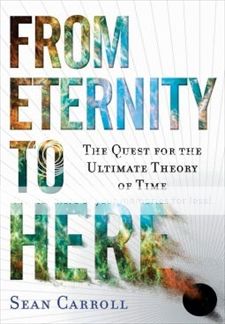
What is time? How does it work? Why is it immutably unidirectional (moving from the past and towards the future)? And most importantly, why does time exist at all? These are among the preeminent metaphysical questions to date for scientists and laypeople alike. Using the principles of entropy and universe expansion since the Big Bang, cosmologist Sean Carroll (recently profiled in the New York Times) hypothesizes about the arrow of time in a brilliant new book From Eternity to Here: The Quest for the Ultimate Theory of Time. In addition to reviewing the book, ScriptPhD.com’s in-house physics and astronomy guru, Stephen Compson, had an extraordinary opportunity to sit down with Dr. Carroll in his physics lab at Caltech University. In a stunningly in-depth, rich interview, they explored everything from the creation of our universe, to entropy, the time-space continuum, how physics and film intersect, and why the principles in Dr. Carroll’s book are important and topical for the general public to grasp. It’s rare to see this wide-ranging of a discussion on popular physics from such an authoritative researcher, so sit back, enjoy and click “continue reading” for more.
I first started writing for this site because I was excited about the relationship between fiction and physics, especially what they both can tell us about the nature of time. From The Time Machine to Groundhog Day, many of our movies have posed questions about moving outside the arrow of time. In another way, the recent popularity of movies with out-of-order chronology, like Pulp Fiction or Memento, have served to make the public more comfortable with non-traditional narratives. Since many of our questions about space and time originate with the work of Einstein, it’s worth mentioning that Virginia Woolf was one of Einstein’s early supporters and publishers in America, and that his work on relativity in turn clearly influenced writers like Woolf, Joyce, and Faulkner (both also published by Woolf at some point). Here in 2010, as we fire up the Large Hadron Collider in Switzerland, it seems that physics is due for another upheaval, which will no doubt have an impact on the way we tell stories.
That’s why I was so excited to get my hands on a copy of Dr. Sean Carroll’s latest book, From Eternity to Here: The Quest for the Ultimate Theory of Time. If you’re a fan of Stephen Hawking’s Brief History of Time, or you find yourself lurking in the physics section of your local book store, or you just want to learn what we know about time, this book is the definitive work of the moment.
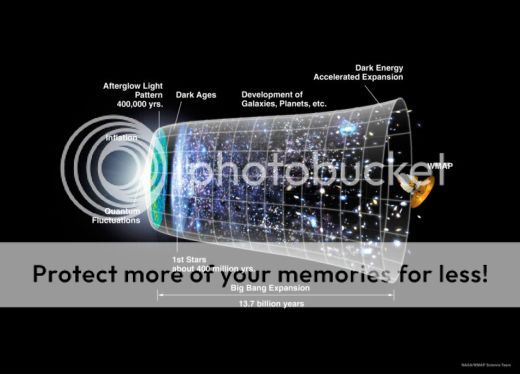
Sean Carroll is a respected professor of cosmology at Caltech University, and the recommendation quotes on the back of his book read like a who’s who of popular physics writing. The book is very readable, and anyone who can follow the byzantine plotline of Lost should be able to understand the ideas he presents. His theory has to do with the concept of entropy, the measure of the orderliness of the universe. Our universe went from a low entropy compressed state before the Big Bang to the expanding state of increasing entropy, in which we now live. The metaphor he often uses in the book is that you can make an omelet out of an egg (or you could drop the egg, or freeze it, or do any number of things), but once that omelet’s been cooked you can’t make it back into a raw egg. From Eternity to Here is an examination of why that is so, why time moves from past to future and not backwards (apparently this wasn’t obvious to scientists!).
The book is also a vehicle for Carroll to throw in his hat on cosmology’s Big Questions of how the universe was formed, how many universes there might be, and why the Big Bang could happen. What makes his work accessible to the armchair physicist is that he roots his ideas in examples you can find in your own kitchen and in diverse selections from popular culture, everything from science fiction to Dumb and Dumber.
As you’ll see in my interview with Dr. Carroll below, physicists today are struggling with the same questions about fate and free will that made Spiderman go emo. I tried to pin Carroll down on the answer, but he’s got better moves than Spidey when the conversation starts to turn toward the philosophical. Also, when you’re trying to ask a scientist at the top of his field about his work, chances are you’re going to assert something stupid in your questions at least once. I managed to do that about four times. But he answered the questions without making me feel like a complete idiot, which is, I think, what the book really does well. It’s informative without condescension (as Hawking’s work can sometimes feel). Carroll even manages to be funny (for a scientist). As physics marches forward to the tune of the Large Hadron Collider, we’ll need more books like From Eternity to Here to keep up with the research.
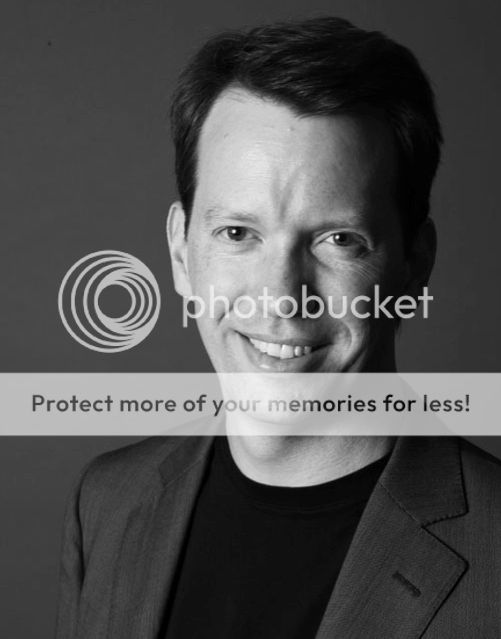
Interview With Sean Carroll:
ScriptPhD.com: How would you define Cosmology?
Sean Carroll: Cosmology is the study of the whole universe all at once. Cosmology looks at the big picture of what the universe is made of, where it came from, and how it’s been evolving.
SPhD: Your book deals a lot with time and with entropy, and dances around the issue of. Where does From Eternity to Here leave us in terms of our free will and what physics can tell us about that?
SC: I’m trying to reconcile the fact that physicists think there are laws of nature which are never broken and we obey those laws, but on the other hand we think that we’re able to make choices. I think both views are compatible with each other. The point is that we don’t know as much about the future as we know about the past. With the past we have a feeling that it’s set in stone, and that has to do with the fact that the entropy was lower, but the future is unknown to us. I think that’s the reason why we can feel and act as if we have free will.
It makes sense to think of ourselves as beings that have choices to make, because, even if all the pieces that we’re made of, all the particles and atoms and so forth, obey the laws of physics, we don’t know the state of all those particles. It makes no difference what those particles are doing because we don’t know, so we can act as if we have free will, and at the same time obey the laws of physics.
SPhD: Your book draws on examples from movies and TV shows. Are there any works in popular culture that come close to conveying our actual understanding of time and the universe?
SC: That’s a hard question. There are plenty of works that play with our understanding. My favorite is probably the movie Memento, by Christopher Nolan, it’s not science fiction but it uses time in a very interesting narrative technique, with flashbacks and reverse chronology. There’s also TV shows like Lost where you have time travel and alternate realities. They’re not trying very hard to stick to the laws of physics, but they’re trying to be logical and consistent. I wouldn’t turn to movies or TV shows to learn about how physicists think of the nature of time, but they’re certainly very useful in prodding us to think about time in imaginative ways.
SPhD: What do you make of the idea that American movies often boil down to a question of fate versus destiny?
SC: I think it’s a classic dilemma, are we fated to do something or do we have choices in the matter? And the laws of physics have the same dilemma built into them, on the one hand, we all obey the laws of physics, on the other hand we think we can make choices. I don’t think that the large-scale choices that we make are in any way fated, I was not destined to become a physicist. But if I knew the velocities and positions of every particle in the universe, I could figure it out. It makes a great dramatic tension to feel that something is inevitable and watch the hero fight against that.
SPhD: Quantum mechanics tells us that there is something to the act of observing the positions and velocities of those particles, would you say that if you had observed all the particles that you might miss your chance to become a physicist?
SC: Quantum mechanics makes things more complicated because it says that when we observe something, we can’t know exactly what it is we’re seeing, we can only observe the probability of something happening. I don’t think that changes the basic story because we don’t know the whole system so it doesn’t really matter anyway. Large scale human activities are impossible to predict in practice even if they could be perfectly predictable in principal.
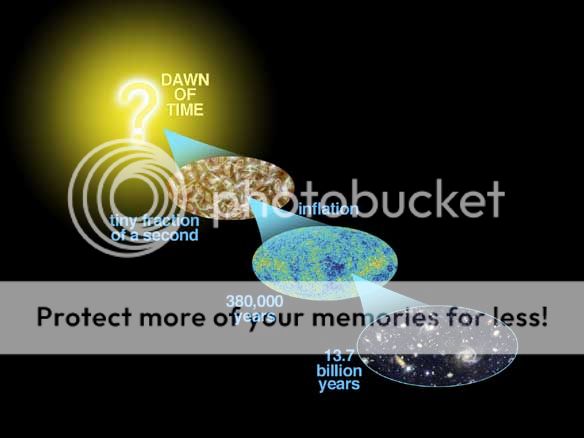
SPhD: Do you think that our existence as intelligent beings is a cosmic accident? And would you consider that to be a low-entropy result?
SC: That’s a very interesting question, actually. Entropy goes up as the universe evolves, but simplicity and complexity are harder to predict and understand. The universe starts out very simple, and it’s going to end very simple. The complexity happens in between. There are senses in which the existence of complexity in our current universe arises because entropy is increasing. When entropy was very low there was no complexity, once entropy hits its maximum value there will be no complexity, but in between interesting things can happen. So I don’t think it’s crazy to wonder if the existence of life and consciousness arose because entropy is increasing. A lot of details still need to be worked out around that, but something like that might be on the right track.
SPhD: In your LA Times Interview, you talked about how many of your colleagues take the progression of time from past to future for granted because that’s the way it works in our universe. It reminded me of the geocentrist debate, where we want to see ourselves as the center of things because this is the universe we live in, so of course it must be that way. What can we learn from the mistakes scientists have made in the past, and what do we have coming up in terms of experiments that will shed new light on cosmology?
SC: My own personal philosophy about that is that we need to remove ourselves from the universe that we are actually in and ask ourselves what we think the universe should be like if we couldn’t make any direct observations. Let’s say we knew the laws of physics, but we didn’t know the configuration of the universe, there’s no reason from that thought experiment that we would end up with something like the Big Bang, there’s no model that could predict something like that, yet. We’re not on the verge of answering that question, that’s a hard question. We’re still groping our way towards some better ideas, but we’re doing lots of experiments that should help us out. We’re doing cosmology experiments, learning more about the background radiation that’s left over from the Big Bang. We’re doing particle physics experiments, the Large Hadron Collider in Geneva hopefully will teach us something about the laws of physics that we don’t know yet. So it’s not a short term project, it’s a long-term project, but the important thing is that we’re absolutely making progress.
SPhD: The LA Times also asked you if God exists in a multiverse and you said we shouldn’t need God to explain physical phenomena. If some being in the multiverse did create our low-entropy universe, could we distinguish that being from what we think of as God?
SC: I’m not sure how you would ever know that that’s what happened. There’s no reason to think that it can’t be explained by purely material things going on. Scientists like to look for the simplest possible theory that fits the data, and we don’t have that theory yet in cosmology, but there’s certainly nothing in the structure of our theory that indicates that we won’t be able to get a purely physical theory of everything.
SPhD: If either a Being or physical phenomena did create our universe in its low-entropy state, what kind of energy would it take to accomplish that task?
SC: The good news is you don’t need that much energy to create the universe. One of the secret lessons of general relativity, Einstein’s theory of gravity, is that if the universe is closed—it sort of curls back on itself—the total energy of the universe is zero. That seems crazy to us because there’s a lot of stuff in the universe, but the positive contributions to energy and the negative contributions to energy exactly cancel, as long as the universe is closed. So to make a new baby universe, to take the old space-time and pinch off an entirely new space-time, costs no energy at all. That doesn’t mean it’s easy to do, it just doesn’t require a lot of resources to do it.
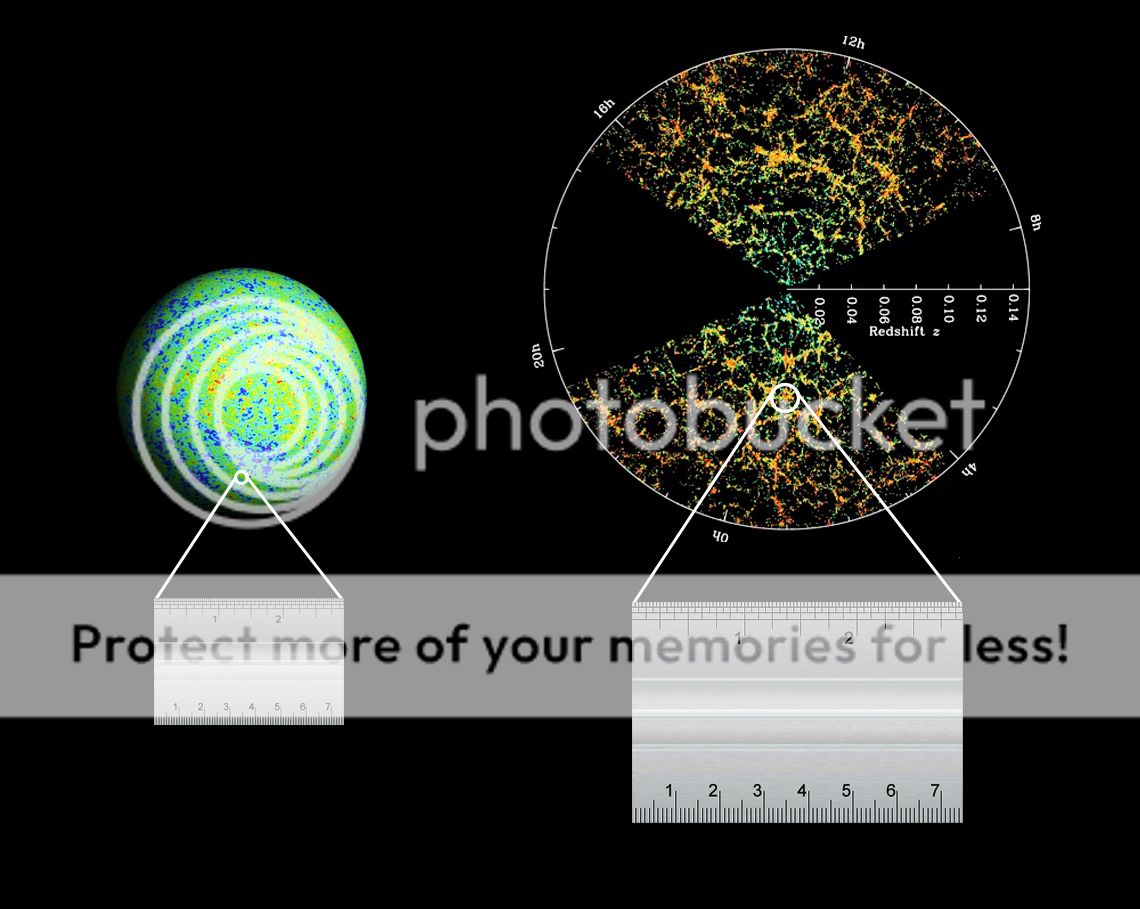
SPhD: If the speed of light remains constant throughout space-time, shouldn’t it be possible for us to map the expansion of the universe with the history of light?
SC: That’s basically what we do. We take light that you can observe today coming from different sources, and those sources are of different ages because they’re at different distances. The far away ones are much older, have emitted their light long ago, and the closer ones have emitted their light more recently. That spectrum of time is actually very useful to us, if we only saw the universe as it exists today, in some sense we would know less. This way we can actually see back into the past.
SPhD: Do you think we’ll eventually have a complete map of our universe?
SC: We won’t ever know everything there is to know about our universe simply because, given that the speed of light is a finite number, there will always be some things that the universe won’t let us see, they’re simply too far away. The best we can hope to do is to put together a schematic picture that makes sense of the part of the universe that we can see. It won’t ever be complete, there will always be more to learn and more to figure out, but we should be able to understand the basic outline of the universe in which we live. We’re not there yet.
SPhD: What do you think of film’s potential as a four-dimensional mapping tool?
SC: In the CGI era, you get to choose every single pixel that appears on your screen. I think visualization of space and time is certainly something we can do, but I don’t know that it’s been exploited anywhere near to what it could be. Flying through galaxies is nice, but it’s very hard to get the evolution of the universe right. We always want to show a picture of the universe from the outside, but we’re stuck inside. I hope that with technology we can put together representations of the universe from the inside, where you can see it expanding and get a more intuitive, hands-on feel for what’s going on.
SPhD: Since you mentioned Memento, how do movies that invert technology lay the groundwork for our understanding of space-time?
SC: There’s something very interesting about how we tell stories. Narrative certainly has the arrow of time, earlier things first, later things later, and that’s not always respected [by the storytellers]. Stories are told through some funny time order, and that’s always done with some purpose, it’s challenging our assumptions for interesting reasons. Because of physics, and because of entropy and the arrow of time, we have this idea that the past moves to the future in a certain way. That the effect comes second and the cause comes first. It goes both ways, you can understand a little bit about how the narrative techniques work by understanding how the physics work, but you can also appreciate going into the physics and where it comes from in some way by really trying to wrap your mind around some of the more interesting narratives out there.
SPhD: It seems that entropy is in some way dependent on decisions made by the observer. As we follow our world lines and make decisions, aren’t we actually decreasing entropy within our light-cones?
SC: That’s not true, actually. There’s a confusing discussion about how dependent on individual observers entropy is, and that’s partially because there’s more than one definition of entropy. One way of defining entropy is by measuring how much you don’t know about a system, but clearly that’s not something we could physically understand. But there’s also a definition of entropy that has nothing to do with our knowledge: that the universe can be in a more likely configuration or a less likely configuration. We human beings are unusual structures in the universe because we attempt to create a little bit of order around us, we attempt to remember things, to organize our local environments. But the way that we do so greatly increases the entropy of the universe as a whole. We spread out a lot of extra entropy into the universe by our activities here on earth. We are not anywhere near equilibrium, a state of very high entropy, but if the environment were anywhere near high entropy we would not be here.
SPhD: Why is that?
SC: What we think of as life, environments and information processing and metabolism, depends on the fact that entropy is low, overall. If entropy were high, nothing would happen, so we would not be able to organize our lives better. We can make our environment orderly by increasing the entropy of the universe, but if the entropy of the universe were already at its maximum we could not create order.
SPhD: Why did you write this book? Why is it important that the public understand cosmology?
SC: Time is something that a lot of people can relate to. We use time every day in our lives, and the amazing thing to me is that the way that time works is really dependent on the universe itself, dependent on the Big Bang. We’re all sort of living in the aftermath of that influential event. It’s a great route to thinking about some big ideas, some big abstract concepts that are still grounded in things that everyone can understand.
SPhD: What would you say is the thinnest part of your argument?
SC: The major point of the book, that the arrow of time ultimately depends on cosmology and conditions near the Big Bang, is ultimately solid. That’s something that, not everyone agrees, but they should agree. The puzzle, then, is why was it like that? Why did the early universe have such a low entropy? I don’t think we know very much about that yet, I have my favorite idea and it’s in the book, but I’m not wedded to that idea, I think we have a long way to go before we can be confident. We have a good handle on the problem, we don’t have a good handle on the solution yet.
SPhD: Experimentally?
SC: It has to be a give and take between experiments and theory. We don’t know what experiments to do until we have a theoretical basis to ask questions, but we don’t know which theories are right until we have experiments to test them.
SPhD: What’s the single project in physics that you’re the most excited about today?
SC: As a theorist, I’m trying to figure out what happened around the time of the Big Bang. I think that’s plausible, we can really talk about it sensibly now whereas fifty years ago we couldn’t ask that question. So I’m hopeful, but it’s a hope based on optimism, not an experimental basis, yet. Experimentally I think it’s all about the Large Hadron Collider, that’s no secret. We don’t know what it’s going to tell us. One of the things about physics experiments is that we don’t know what the answers are ahead of time. But we’re looking into a space which is unknown, which we haven’t looked at before, so the chances are we’re going to find something surprising.
For you physics nerds that just can’t get enough space-time continuum jabber, we recommend Sean’s one-hour TED Talk lecture at the University of Sydney on nature of time, the origin of entropy, and how what happened before the Big Bang might be responsible for the arrow of time we observe today. Part I and Part II.
Stephen Compson studied English and Physics at Pomona College. He writes fiction and screenplays and is currently working toward a Master of Fine Arts at UCLA’s School of Theater, Film & Television.
~*Stephen Compson*~
************************
ScriptPhD.com covers science and technology in entertainment, media and advertising. Hire our consulting company for creative content development.
Follow us on Twitter and our Facebook fan page. Subscribe to free email notifications of new posts on our home page.
]]>
The Hubble Space Telescope is the world’s first observatory that actually orbits—you guessed it—through outer space. Over the last decade, Hubble has captured some of the deepest and most detailed images of our universe. All those recent headlines about exoplanets: those discoveries come from Hubble. Scientists viewing pictures of light projected from stars over 13 billion years ago (almost at the origin of the universe): that’s Hubble, too. Hubble 3D documents the 2009 mission by the crew of the Shuttle Atlantis to make vital repairs to one of mankind’s most expensive, and significant, science projects. There would be no second chances. If the mission had failed, Hubble would be just another piece of junk orbiting above the earth, like my Direct TV satellite and Elvis’s body. The tension is real, the suspense extraordinary, and the imagery? Out of this world. And fortunately for terrestrial audiences, the entire mission was captured by the crew and director Toni Myers on some of the most breathtaking, brave film ever recorded. We are proud to make Hubble 3D an official ScriptPhD.com Editor’s Selection.
REVIEW: Hubble 3D
ScriptPhD Grade: A+ (Editor’s Selection)
How’s this for high stakes movie drama: NASA Mission specialist Mike Massimino, who was involved in the two previous missions making repairs and upgrades to the Hubble, a six foot three comedian who somehow conned NASA into putting him into orbit multiple times, squeezes inside the confined space of a delicate and incredibly expensive apparatus that was never intended to be modified once put into orbit. He has to access a circuit board behind 173 screws, which he must attempt to delicately handle in a space suit. If he bumps into something or a screw floats free it will put the whole telescope out of commission. To add extra danger to the mission, he’s handling sharp electronics which could tear his gloves, exposing him to extreme outer space conditions, and kill him.
The astronauts are the highlight of the film, as they provide a human element to this story in the stars. One thing Hubble 3D does very well is give the audience as close to an authentic experience as possible of space travel, which includes watching the astronauts make burritos in zero gravity, or hearing them talk about scratching your face before you put your helmet on because you won’t be able to touch it once you’ve suited up. But where the film really shines is through its spectacular 3D flythroughs of the births and deaths of stars, the super massive black hole at the heart of the Virgo cluster, and a cloud of newly forming galaxies. Take a look at some of the breathtaking cosmos imagery bestowed to scientists by the Hubble telescope:

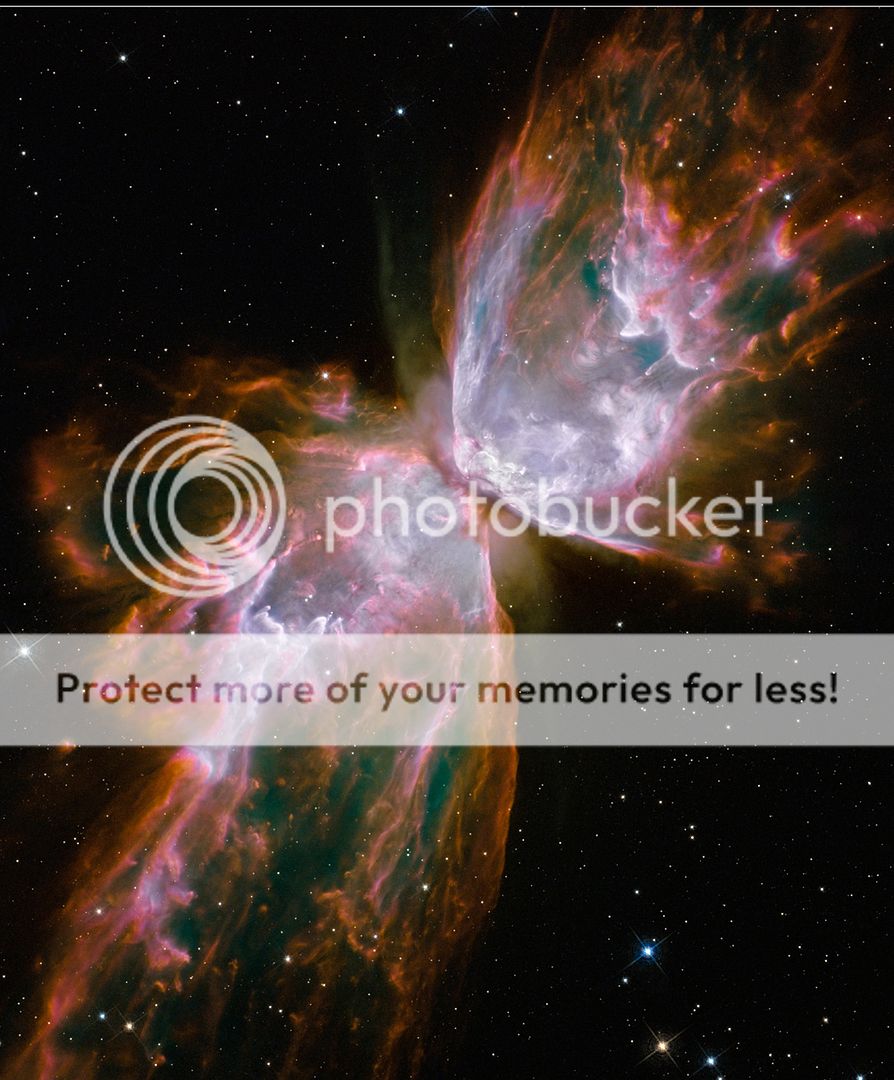
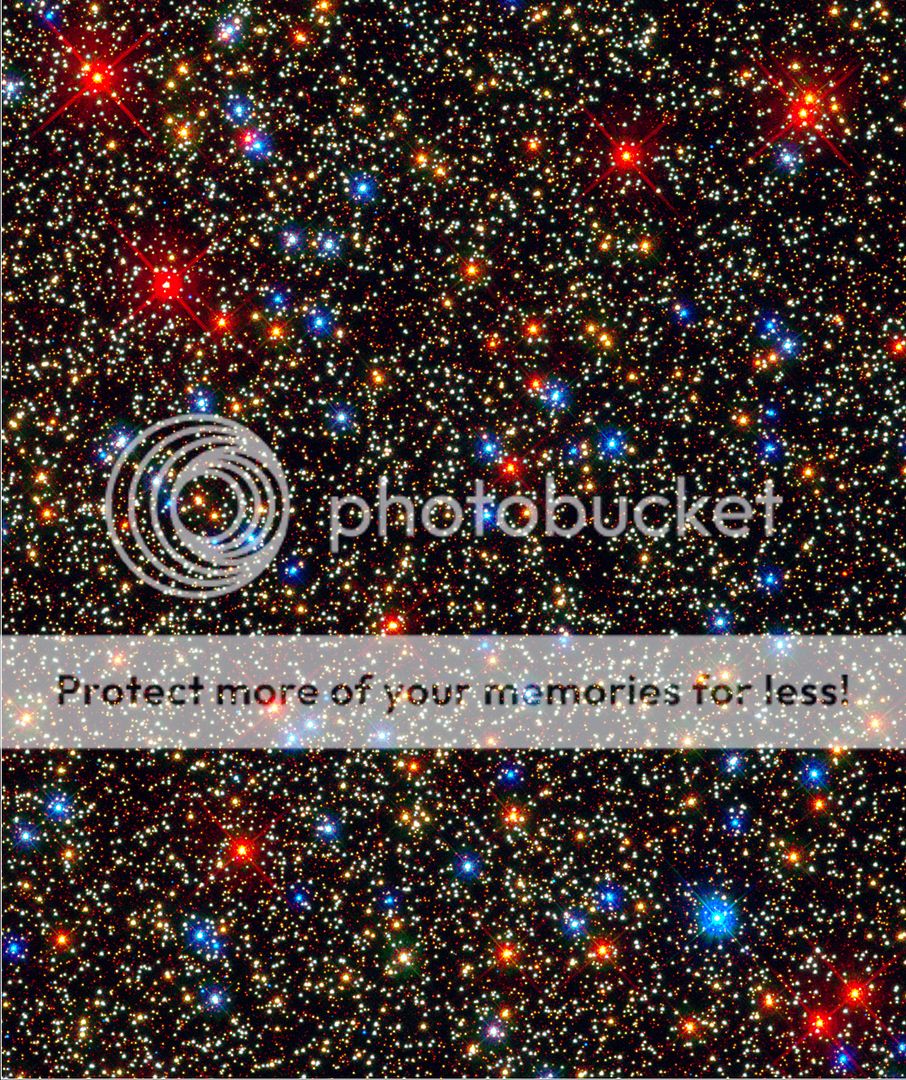
Director Toni Myers is a titan in the IMAX world. She’s worked in the format since its invention in the 1960s, and if you’ve ever seen an IMAX title having anything to do with nature or science, chances are she directed it. For the incredible flythrough sequences, she worked in collaboration with the Space Telescope Science Institute in Baltimore to produce the footage, then compiled them into a narrative with the supercomputer at the Advanced Visualization Laboratory at the University of Illinois at Urbana-Champagne. But let’s be crystal clear: none of the cosmos imagery is second-rate computer simulation; it’s all compiled from real data taken by the Hubble telescope.
There were other unique challenges in the making of this film. Myers couldn’t exactly send Director of Photography James Neihouse into space on the Atlantis, so they had to train the astronauts in the IMAX camera’s use. The Atlantis only had room for eight minutes of film capture, so they couldn’t afford to waste a single shot with bad focus or poor lighting conditions. If you’ve never witnessed a shuttle launch in person, Hubble 3D offers the next best thing with some truly visceral footage. Myers and Niehouse buried their 2 million dollar camera in a bunker of sand bags only 57 meters away from the launch site. The results are, as Massimino puts it, the closest most of us will get (and probably would ever want to get) to the actual feeling of a launch.
Leonardo Dicaprio’s narration is breathy and at times a bit hammy, but it’s hard to imagine a narrator who could do justice to the unbelievable scale of these images. Seeing the stars like this is a sublimely humbling experience. When the final images of the universe faded and the lights came up, many people around me (including ScriptPhD Editor Jovana Grbi?) were crying. If it sounds like I’m describing this movie as some sort of religious experience, well, you should just go see it for yourselves. Hubble 3D provides a captivating look at the fruits of one of mankind’s greatest scientific achievements.
Exclusive ScriptPhD.com Q&A with NASA’s Mike Massimino and Director Toni Myers
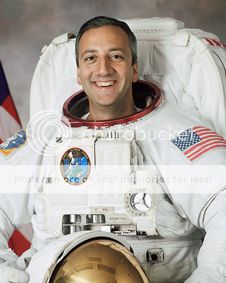
Mike Massimino is big for an astronaut, an attribute that made me nervous watching him crawl into the world’s most expensive telescope. But he’s also quite funny. Someone asked if he had any concerns about the film and he quipped: “Having to see my nose in 3-D.” He was also ecstatic about the film’s release because it was a rare opportunity to get his teenage daughters excited about something, not that their dad was an important astronaut on an important mission, or even that he’s in a movie, but that his name would be narrated by Leonardo DiCaprio.
Toni Myers has trained over 120 astronauts and cosmonauts in the art of IMAX photography. She directed the award-winning Space Station 3D along with many other space and nature-related IMAX pictures. After sending one of the most expensive cameras ever made into space, she had to wait an ulcer-inducing four weeks before the footage was rendered to see what the astronauts had actually filmed.
ScriptPhD.com joined a roundtable discussion with this pair to talk about the making of the film, the challenges of shooting in space, and the future of the American manned spaceflight program.
You were talking about how the night cycle offers this incredible view of the stars, and I wondered why we didn’t see more of that footage during the film?
Toni Myers: I can answer that- it has to do with shooting in IMAX–
Mike Massimino: You’d better. I just set the thing on auto and pressed the red button.
TM: -IMAX film is a 65 mm negative, so it just can’t capture stars during the night. If one of your prime shots happens during the dark you really can’t see it in IMAX. It’s
the equivalent of ASA 250 depending on how you rate it, it just won’t capture those wonderful images crews always talk about like lightning storms or aurorae.
Mike, how would you describe seeing the stars during a night pass?
MM: You know, when you first get to space you immediately run to the window and see that view during the day, and I remember my first flight I’d always be at the window during the day cycle and go ‘Ah, it’s dark, I’m gonna go downstairs’ until I decided to hang out at the window for a night pass, and I actually enjoyed the night passes as much or more as the day passes.
During the day it’s bright out, you can see the oceans and the clouds very clearly, when you go at night all of a sudden it’s like this magical time. You can see the line [of the approaching day pass]. And the stars, they don’t twinkle because they’re not coming through the atmosphere. They’re just these perfect points of light. You can see the gas from the milky way, you can see the Magellenic clouds, and all of the constellations like you’ve never seen before. It’s the greatest planetarium in the world. And you can also still make out the earth, sort of. Where the sky meets the earth there’s like this greenish bluish color where the sky meets the earth. And when you come over a city you can see the lights, kind of like when you’re on a plane, you see these clumps of light around cities. There was a lot of storm activity when we were flying over Australia at night time and you could see those thunderstorms light up the clouds from above. And you’re above it, you don’t see anything else, just the gases coming up from the clouds, it’s almost like it’s communicating-
TM: -It’s propagating.
MM: It’s almost like you’re spying on people. You’re flying over Europe or something, and you can see where people are living. You can see their light. You go over Africa and it’s pretty dark, maybe a few places with light. Japan is really cool because it’s all lit up and then you get those rings of light all around it, which I think are the fishing boats offshore. Then you come over the United States and it’s like a Christmas tree. The west coast is really lit up, you’ve got a lot of action up in the Chicago area, and up in the Eastern seaboard, man it’s just unbelievable. The signs of civilization over the US compared to the rest of the world are just incredible. You look down at Miami, and then there’s like a black-out in Cuba. They didn’t pay their electricity bill or something.
I had a question about the take-off. I was blown away, literally. How close are the cameras for that and are they destroyed?
TM: They are not sacrificial cameras, I wouldn’t have a job if I was destroying a couple million dollar cameras. They’re both in blast boxes, which are very protected and the one was actually on the pad looking up, 57 meters from the base of the shuttle. The box is literally drilled into the pad. It’s a hardwire start that NASA activates, and you have to time it before the launch so you have a handle on the shot before you get a bunch of dust in your face. And there are ¾ in. ports that the lenses look through, and we covered the whole thing in sand bags the day before so it looks like some kind of creature there. And we had a second one on top of the rotating structure above the shuttle. We had not actually done that position before and we knew there was gonna be significant motion in waves around it, but both came out really well.
MM: I was watching the movie for the first time with my wife in Washington, and I first thought my wife’s seat was shaking because of the sound from the movie during the launch, and then we realized it was me that was shaking. It really allowed me to relive this whole experience and allows me to share this experience with other people who weren’t there.
TM: I was shooting Space Station 3D and a rock went right through the ¾ in. glass on one of my cameras, and I thought, well, I’m spending the rest of my life in Kazakhstan, I can’t go home. But James [Niehaus] fortunately had put a neutral density filter in front of the lens in the camera and the rock hit the filter and just dropped, didn’t damage the camera, and as a result we had this 3D shot of debris coming towards the camera and shattering the glass, and when people watched that at the IMAX, many of them actually take their 3D glasses off and looked to see if they had shattered.
It’s not looking very good for our manned spaceflight program right now in this country, do you think people will look at this film and think maybe we’re making a mistake?
TM: I’d love to just say I think it’s a mistake and I certainly said so in this film. If we intend to go anywhere we need these skills, and at least a human and robotic partnership just like the space station. I think people need to understand that if you go back to the moon or especially if you go to Mars you’ve got to build some kind of infrastructure there and the things that crews have learned in the process of building a space station on orbit and how to live there on a permanent basis are everything you need for our future off the planet. I think we’ll look back and see this as just a minor little blip, if it is a blip. The Chinese will say they’re going to the moon tomorrow and everything will speed up.
MM: I think the movie does show people what we’ve been able to do with the shuttle here, and Toni mentioned the space station which was built by shuttle crews. I’m optimistic, I don’t think you’re gonna be able to kill the space program. Certainly throughout the world, we have a lot of partnerships with other countries , for example the Russians, who are our partners– we’re going to be using their space ships.
The shuttle program is ending, by the end of the year most likely we’ll be done, so you have to have something else. Going around the country with the support that we have from all the taxpayers who are paying for this thing and from politicians on both sides of the aisle, and from the president as well, I do not think that we’re going to accept not being a part of the international space community, and I mean sending people, not just the probes.
I think in America we see ourselves as explorers and enjoy being right in the heat of it. We’re not going to let other countries beat us, so I think we’re going to continue to send people into space and I think we’re going to want to have our own spaceships here to do that as a back up to the other countries. I think we’re going to have something, whether it’s going to be commercially developed, some kind of joint venture with NASA, will it take astronauts plus tourists, I don’t know how all that’s gonna be worked out, but I am convinced that we’re not gonna stop.
Why do you think it’s so important to send people into space?
MM: I need a job and I got these two kids going to college…No, in some ways it’s hard to justify, although Hubble 3D shows that we can do practical things, when Hubble breaks we can send people up there to fix it. When the bolt was stuck on the handle I was able to rip it off. We’re able to adapt and do things that you wouldn’t be able to do without a person on the spot. We’re all people here on this earth, we want to experience things first hand. Unfortunately not everybody can go there, but I think as a species we like to send at least some representatives out there to explore and see what’s going on so we can experience it as people. There’s no way that that argument can hold in any kind of budget discussion where it’s up against what the taxpayers can afford, but from just a human point of view I think that’s what’s going to keep us going in the end. We don’t want to just send a probe and take pictures, we want to have people see what it’s like to actually see a new world and describe what it’s like.
TM: To add one coda to that, I recently listened to former astronaut Mike Collins speak at the fortieth anniversary of the moon, which was a little more urgent, and what he said was that maybe we’re going to have to expand outward from this planet in the coming century because of a population explosion. There are very practical reasons. Think of how we look back at Galileo 500 years ago, I bet 500 years from now we will look back having established habitats elsewhere.
By the way, you can follow Mike Massimino on Twitter. He sent the historic first tweet from space during the Hubble repair mission.
Hubble IMAX 3D goes into limited IMAX release on March 19, 2010 and is in theaters nationwide in August.
View trailer:
Stephen Compson studied English and Physics at Pomona College. He writes fiction and screenplays and is currently working toward a Master of Fine Arts at UCLA’s School of Theater, Film & Television.
~*Stephen Compson*~
***********************
ScriptPhD.com covers science and technology in entertainment, media and advertising. Hire our consulting company for creative content development.
Follow us on Twitter and our Facebook fan page. Subscribe to free email notifications of new posts on our home page.
]]>There is grandeur in this view of life, with its several powers, having been originally breathed into a few forms or into one; and that, whilst this planet has gone cycling on according to the fixed law of gravity, from so simple a beginning endless forms most beautiful and most wonderful have been, and are being, evolved.

Charles Darwin’s postscript to perhaps the greatest work of biology ever recorded, The Origin of Species, ignited an acrimonious debate about science, religion, the mutual exclusivity thereof, and where we come from. 150 years later, as we celebrate the anniversary of Darwin’s monumental scientific achievement, it is a debate that has yet to abate. Regardless
of what stance one takes on evolution and natural selection, fascination with the life and times of this inimitable figure is undeniable. A new biopic, Creation, delves into the dichotomy of Darwin the naturalist and family man, the disapproval he faced from a devotedly Christian wife, and the inner anguish he faced in whether to publish his findings. ScriptPhD.com’s Stephen Compson was recently treated to a private screening of the film and had the extraordinary opportunity to sit down with Darwin’s great-great-grandson Randal Keynes, whose Charles Darwin biography the movie was based on. For our exclusive content, please click “continue reading.”
REVIEW: Creation
ScriptPhD.com Grade: A-

Creation tells the biographical story of Charles Darwin struggling to complete his opus: On the Origin of Species. The screenplay was adapted from Darwin’s great-great grandson Randal Keynes’s book Annie’s Box. Paul Bettany stars as the father of evolution, with his real-life spouse Jennifer Connelly portraying the devoutly religious Emma Darwin. Creation is not the story you think it is, especially if you’re of a mind to burn books along with anyone who tries to rub your nose in empirical evidence. This Darwin is immediately likeable and sympathetic because he’s tortured by his findings. While his persecuted-scientist friends urge him to publish and show that lousy church once and for all, Charles must first deal with a domestic dispute two decades in the making and lay to rest a daughter (Annie) whose death he blames on himself.
The opening is a series of coalescent images: particles in space gaining gravitational momentum transitioning to cells colliding under a microscope, becoming fish swimming together in a bait ball. As we move up the food chain, it’s immediately apparent that there’s a capable hand guiding the lens. This is director Jon Amiel’s most visually stunning work to date, and its vibrancy contrasts with the somewhat cold Victorian setting to give us a front seat in Darwin’s inner eye. The story jumps about in time and setting. Annie’s ghost haunts Darwin through the draft like an editor with a PhD. He tells of his Galápagos adventures as bedtime stories to his children, but it’s clear even to his youngest that Charles favors Annie over her siblings. His guilt is immense, as though by articulating the principle of natural selection he has allowed his favorite child to succumb to it. And so the scientist is forced to confront in the most painful way possible the cold ramifications of his findings. Only by laying Annie to rest and reuniting with his religious wife can he publish his findings. This is thematic film-making at its best, the centuries-old debate over Darwin’s findings personified by immediately human performances.
There’s another layer to this story about science and religion. Darwin argues with his wife about the superiority of science while ingesting doctor-prescribed laudanum for an upset stomach. Laudanum is a powerful opiate that also influenced the works of Lewis Carroll and Samuel Taylor Coleridge (we must imagine briefly the time when critics will look back at our generation and think to themselves, sweet Darwin, they all drank so much coffee). Also, both Charles and his daughter are treated for illness by having torrents of cold water poured onto them, as this was supposed to be the cutting edge of medical science. Here is one of history’s most respected scientists giving and receiving treatments that must have been detrimental at best. It is an interesting and subtle note: that science is not always so objective, that both doctors and ministers haven’t yet had their last word, and the only ones we can be sure are wrong are the polemicists.
The official studio notes describe the film as “Part psychological thriller and part heart-wrenching love story,” which is a typically superfluous press packet way of saying it’s a drama. You wouldn’t expect a scientist’s biopic to be filled with such vibrant themes and images, or noteworthy performances, but Creation has both. Jennifer Connelly’s spoken pieces are heart-wrenching, but she is at her most violent when she sits in front of the piano, damning her husband with every note like Madame Defarge knitting a guillotine roll-call. Though the high drama occasionally stretches dangerously thin, the married stars bring a natural chemistry that keeps the dough from tearing.
Creation is a quiet film released on the year marking the bicentennial of Darwin’s birth and the 150th anniversary of his seminal work. Rarely does a film confront controversy with so balanced and nuanced an account. Both sides will find their talking points, but the characters are so rich you might just forget about keeping score. Yes, it’s a story about a scientist, but it’s a lot better as a story about a man struggling to tell right from wrong and keep his family together. Then at the end—Spoiler Alert!—this man just happens to publish the theory of evolution.
Exclusive ScriptPhD.com Interview With Randal Keynes:
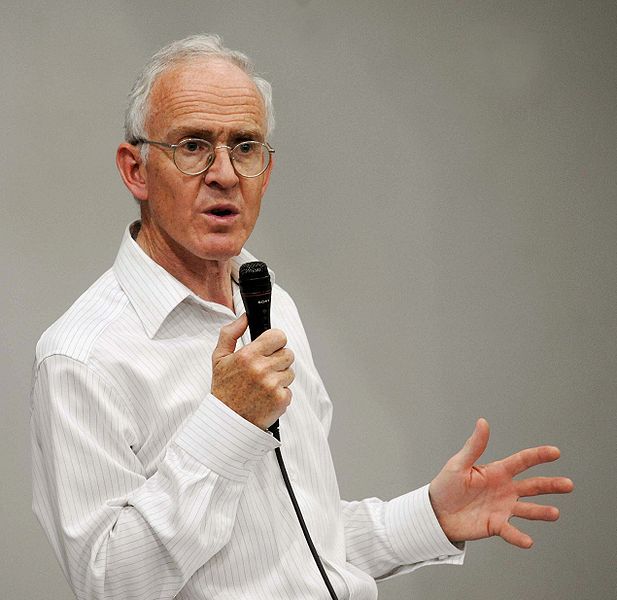
Randal Keynes is the great-great grandson of Charles Darwin and author of the biography Creation: Darwin, His Daughter, and Human Evolution, on which the movie is based. When I arrived at his hotel, I was informed that the interview had to be postponed for an hour because Mr. Keynes was at a Twitter party. I must confess that I’ve fallen behind in my grasp of Twitter-speak, but it sounded to me like I was waiting while he sat upstairs in his underwear updating his feed. During the interview, I would often catch Mr. Keynes staring lewdly at the overgrowth of hair sprouting out the top of my shirt, and when I asked him to focus he sipped deeply from his red wine and went back to tweeting. I’m kidding about the chest hair. But not the Twitter party.
ScriptPhD.com: Tell us how you found the item that inspired this book about Darwin, his daughter Annie’s writing box.
Randal Keynes: For most of my life I took very little interest in Darwin, but about ten years ago I was asked if I could help the organization that opens the [Darwin] house to the public. They wanted information about how Darwin lived with his family. My father had inherited a big chest of drawers from his mother, Darwin’s granddaughter, and in the bottom corner of this chest I found this writing case, and in it there was a folded piece of paper with Darwin’s handwriting: “Annie’s illness.” It seemed to be a note that he had made of the treatments he gave her every morning and how she reacted to it.
SPhD: So he was actually treating his daughter himself?
RK: And this was the extraordinary point. It didn’t fit with my idea of the great scientist on his pinnacle. I found a character that was clearly the real Darwin, because he and his wife Emma were so devoted to Annie: she helped the two of them, keeping them cheerful, helping Darwin with his science. So her father, distressed as he was with all the difficulties of his theory, had to come to terms with her death as well. I found that much of his thinking about human nature one could link with his experience, his love for his wife, the pain of Annie’s illness, his desperation to keep her alive, his sense of emptiness when she died, and coming to terms with the memory. That offered a view of Darwin that was very different. People usually think of tooth and claw, the struggle for existence, life without purpose. I discovered a more human Darwin.
SPhD: What surprised you the most about him?
RK: Especially that, but let me think of something else. I was surprised by the stress and worry he experienced as he worked out the theory and saw how many people would want to attack it when he gave it to the world, and that comes out in the film.
SPhD: What do you think of the film?
RK: I think it’s wonderful. I’m so pleased that [director] Jon Amiel and [screenwriter] Jon Collee were able to shape the story the way they did, and get Paul Bettany and Jennifer Connelly, wonderful actors. In particular, I am particularly pleased about the way they linked Darwin’s interactions with Annie as an infant to those with Jenny the Orang[utan]. Paul Bettany was able to relate to the infant, and to the orang, just as Darwin did. He was just following Darwin. He wasn’t acting, he was just [being] a sensitive, engaged human.

SPhD: What was the importance of [Darwin’s orangutan] Jenny?
RK: Very few people paid attention to her until I found this comparison with Annie. This picture was in the British Library. The strange thing about Jenny was everyone went to the zoo to see her, because no-one had ever seen such a human creature. They hadn’t seen the great apes, they hadn’t seen chimpanzees, they just didn’t know they existed. Almost everybody found it distasteful. The young Queen Victoria came to the zoo to see this big sensation, and she went back to Buckingham Palace and wrote in her diary: “How painfully, and disagreeably, human.” So the young Darwin saw her, and while everybody else was pained, he saw her and he loved the link that he saw.
SPhD: Why do you think we’re still arguing about evolution?
RK: Because the point about our common nature with animals is so challenging and so unwelcome to people who want to think we’re special, we have special favor given by our maker and all that. I think that’s the crux, it’s our thinking about ourselves. I don’t really believe it’s a worry about the literal truth in the book of Genesis. Many many Christians have no trouble reconciling the biblical account of creation with the Darwinian one. Why people were upset by the Origin, I think, is mainly because it suggested to us that we have a common nature with animals. Darwin wrote a second book called The Descent of Man. In his first book On the Origins of Species he said nothing about human evolution, even though there was a clear indication of it, and didn’t publish the second until ten years later, after people had come to see the value of his idea.
SPhD: What did you find you personally related to about Darwin?
RK: I related to his passion about his theory, and his worries about it. If I had the extraordinary fortune to have his idea, and have the responsibility of offering it to everyone else, knowing the response I’d get, I can see how I’d be terrified by it, as he was. I admire him for his bravery.
SPhD: Describe Darwin’s relationship with his deeply religious wife Emma.
RK: He loved her deeply. He wanted to give her all the support and everything that he could. The relationship was for periods of their lives very difficult, because they couldn’t find common ground on these issues of faith and truth: her Christian faith, his scientific truth. But she kept him alive, he was very ill for most of his life with the stress. She protected him from people like Hooker and Huxley who wanted him to reveal his theory. She made this great sacrifice, because he meant more to her than anyone else, and that’s the truth of it. It was a wonderful story, how they found each other, how they loved each other, how she supported him, and how grateful he was to her.
SPhD: What do you think ultimately compelled him to publish? The film touches on a few different moments, but what put him over the edge?
RK: He thought it was profoundly important that people should realize where we came from, how we were part of natural life. He was also very ambitious. He saw the extraordinary power of the idea. People have said it’s unique in how such a simple insight explains so much. Evolution by natural selection explains, not just the origin of life, but the development of it as well. He wanted the pride and the pleasure of giving it to the world, and the delay was just the other side of the coin, I’m gonna say flack. If it stands up, eventually, it’ll all be praise. It’s still not all praise.
SPhD: If Darwin could be any animal, what would he be?
RK: I think he’d love to be a moth, feeding on beautiful plants with his tongue. Taking the pollen from them and putting it into another plant and enabling them to evolve. That was one of the processes he thought was miraculous.
SPhD: How about you?
RK: I’d like to be a condor.
SPhD: You fancy yourself a carrion feeder?
RK: Oh yes. Well, when [John James] Audubon first met the condors he wondered how on earth they found the carrion, the corpses that they lived on, while they were high up in the Andes. He wondered, could they be smelling at that distance, or could they possibly be seeing it? So he took a group of Turkey Buzzards and put some flesh in a paper bag, so you could smell it, and drove it past a group of Turkey Buzzards: no reaction. Then he took the corpse out of the bag, immediate excitement. So when Darwin got to the Andes, he repeated Audubon’s experiment with real condors, and it was clearly sight for them too. I just loved that.
SPhD: Your Wikipedia entry describes you as a conservationist. What are you interested in conserving?
RK: I’m going to change my answer to that last question. I would like to be a giant tortoise on Galapagos, because they have wonderful food—
SPhD: –No corpses?
RK: –Right, and they eat it in total safety, and have a very restful and pleasant life on beautiful islands. They are under such threat, because everybody wants to go see them and when you bring humans to an ocean archipelago they bring diseases and other impacts. I think Galapagos is a treasure for humanity, it shows us what Darwin saw, and shows us how the animals and plants have evolved.
SPhD: Would Darwin support Conan O’Brian or Jay Leno?
RK: Ah, I know something’s going on, is it competition for their timeslots? Is Jay more pugnacious then? I think I know Jay Leno, I don’t know Conan, so, survival of the fittest eh?
SPhD: Ruthless.
RK: But you asked who Darwin would support. He recognized that the fittest survive, but he always had a sympathy for the losers. Don’t say loser. The underdog. Darwin’s for Conan.
Stephen Compson studied English and Physics at Pomona College. He writes fiction and screenplays and is currently working toward a Master of Fine Arts at UCLA’s School of Theater, Film & Television.
~*Stephen Compson*~
***********************
ScriptPhD.com covers science and technology in entertainment, media and advertising. Hire our consulting company for creative content development.
Follow us on Twitter and our Facebook fan page. Subscribe to free email notifications of new posts on our home page.
]]>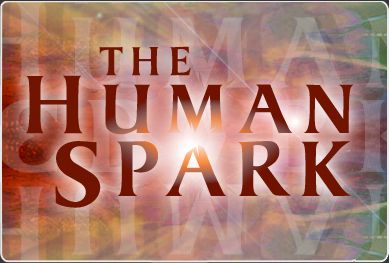
The Human Spark is a new three-part documentary special on PBS in which Alan Alda soldiers after the genetic and cognitive elements that make him smarter than your average chimpanzee. In the first episode, he travels to numerous archaeological sites and many of the world’s finest research centers to look at how humans diverged from neanderthals and why we’re the ones writing the history books. Episode two tracks a series of experiments on chimpanzees and human children to illustrate the psychological differences. The final installment shows off some of the latest brain imaging studies and and linguistics research to postulate a theory on the nature of the ‘human spark’. With an interesting scientific premise as a basis, a hot field in which a lot of exciting, new information has been discovered within the last decade, and financial sponsorship by the Alfred P. Sloan Foundation, one of the most generous and prestigious in all of science, this should have been a knockout for PBS. Sadly, the finished product is merely another example of a strong concept with poor execution, punctuated by bloopers that the documentary’s creators were too pressed for content to take out.
REVIEW: The Human Spark (PBS)
ScriptPhD.com Grade: D
The Human Spark‘s one saving grace is that the first episode is filmed primarily inside the lab, showed the scientists working on fossils, and actually spotlighted some of the technology and methodologies that are making the current discoveries possible. Learning about how scientists date teeth was a pleasure compared with the rest of the program. Alda’s awkwardness as host is at times endearing but too often tedious. His voice-over work is fantastic, but when it comes to live action this scripted special feels a little too real. When the grad students sit down for lunch at the archeological site, Alan finally gets to vent what’s been on his mind since M.A.S.H. wrapped:
“Here’s what I don’t get. The people who moved out of Africa, and who we came to call the Neanderthals, who got here, and didn’t change much from the time they got here until the time they died out, although that was a long period of time, they survived but they didn’t change. They—they’re—their—they came from the same people we came from, and some- and then at some point we started changing. We started being able to change. And then we came up here. These two groups meet. Why did—having come from the same background—why were we able to change and they weren’t?”
On the plus side, after he got done asking this question, the filmmakers only had 50 more minutes of that hour left to fill. And you know they had smart scientists on the show, because one actually provided a cogent answer. Here’s what really kills the premise with this program—PBS did a lousy job editing because they had nothing better to show us. That’s the only justification for content like this. Alan was sent to six different countries to visit archaeological sites that all look the same anyway, so it’s hard to believe they couldn’t afford to do another take on that burning question of his. And as for the visuals, this filmmaker was thoroughly offended (more on this in a minute). The entirety of the show, experts throw huge abstract numbers at the audience: this skull is fifty thousand years old; this bead is over a hundred twenty thousand years old; here’s an imitation sea-shell from two hundred thousand years ago. It’s easier to read them here on the page, but that’s my point. Would it have killed them to put a lousy timeline up on the screen for 10 seconds? The only visual they could afford was a pirated Google Earth frame to show us where the neanderthals camped out. They had imitation sea-shells at that campfire. We just don’t know when.
In case you risk watching this travesty and twenty minutes in you choke on your own boredom, let ScriptPhD.com fill you in on what you missed during the last half hour: Alda shoots primitive projectile weapons at a plastic reindeer. (Yes, PBS members, your money is being well-spent!) The production crew craft an authentic stone-age spear, but instead of throwing it like our humanoid ancestors, Alda’s cheating with a fancy spear-thrower. And he still can’t hit a stationary Christmas decoration! After ten minutes of hopeful attempts ending in bitter disappointment comes the best part: he purportedly hits the thing, but we miss it because the camera’s zoomed in on his face, then it pans over to where someone obviously stuck a spear into the deer’s behind. With effects like that, who needs James Cameron?

Episode Two is an examination of what separates us from chimpanzees, our closest genetic relative. The second installment demonstrates even more clearly that poor presentation can be the death of good content. We’re greeted in this episode by Alda sitting between a chimp and a human child. As he clumsily reads the opening statement from the teleprompter, the kid jumps in with an answer to one of the rhetorical questions, but Alan just talks over him. No one thought that was worth a second take, but this time I think I know why. Across the table from that outspoken little boy was a menacing ball of barely-contained bloodlust. Apart from some developmental psychology, you will learn one important thing from this episode: chimpanzees hate Alan Alda. I’m talking about Hondo, The Human Spark’s sympathetic antagonist. Hondo is a male chimpanzee with an unfortunate childhood that would make Jane Goodall cry: stripped from his family at a young age, denied the furry harem that was his genetic birthright. Day after day, he endures the seemingly trivial experiments of his human captors, given a 50% chance at extracting a measly grape for his efforts. The biologist who describes his characteristics may or may not have finished puberty, his voice cracking with glee as he and Alda share some ground-breaking connection between monkey and car salesman. Does it surprise any of us 99 percenters that Hondo risks it all for one noble shot at wiping that disoriented grin off the aging star’s face? As our host and his eager partner-in-science engage in yet another conversation that didn’t need to be televised for a viewing public, I found myself rooting for Hondo as he hurls himself against the protective glass, proving that even though he can’t best a three year old at logic puzzles, this chimp knows a thing or two about the human spark.
And who can blame Hondo’s aggression, with a format born of the logic that to educate does not mean to entertain. “You’re getting it all wrong!” his expression screams as he fails another test to determine whether he can understand the concept of weight, and throws himself in frustration at the bars between him and his inquisitors. In all seriousness, the presentation does a huge disservice to the undeniable brilliance of the researchers introduced during this segment, particularly since PBS’s mantra is to educate through entertainment. These scientists are people who’ve devoted their entire professional lives to studying what it means to be human, people who conduct seemingly cutting-edge research, yet the program feels like a perfunctory grade-school field trip. How is it even possible to capture monkeys on camera for any extended period of time without it being entertaining? Episode 2 is a point-counterpoint competition between children and chimpanzees that showcases the somewhat mundane scientific method (performing test after test to discover the key differences in psychology). Although these tests illustrate the evidence, the conclusions drawn from them are much more exciting than the process.
The research hints at powerful revelations: the way human children are programmed to teach and learn may give us an evolutionary leg up. But even here, one is left with a lingering doubt: what if the human subjects are more teachable because they’re all children? The Human Spark would have us believe that the kid wins out because the adult chimpanzee would rather pursue the grape with his own strategy, ignoring the researcher’s demonstration. But don’t we afford the human adult the same courtesy, to ignore all rational advice and pleading, just go out and buy the boat, marry the fifth wife? My decidedly human confidence is not bolstered when, after being shown a box with both sliding and pull-out doors to reach the same grape, Alan can’t figure out how to get the darn thing open, either.
Shocking as it might be to believe, the final round of this documentary is the most exasperating. For one thing, it’s the most self-indulgent. As the camera rolls, Alda volunteers himself to the latest and greatest in brain imaging techniques, and some nervous tech compliments him on how bereft of open space his skull cavity remains. After some painful filler including re-used footage from the previous two episodes, we get to watch as different spots on his brain light up in correspondence with different actions. To reiterate, interesting conclusions masked by poor presentation. Nothing envelops an evening with a drowsy warmth like linguistics. At one point, it seems we are to believe that grammar is the root of the human spark. In as much time as it takes to start denying that to yourself, we’ve moved on to religion, coupled with a cheesy montage of people presumably…being religious. And then, like that poor chimpanzee on a crash course for Alda’s head, a relatively startling and profound conclusion: mankind’s ability to think and strategize about the future sets him apart, and one of these brains can (almost) prove it.
Film is a visual medium. Hearing scientists explain their research is one thing, but forcing us to watch them do it rather than illustrating the concepts is uncreative and lazy. Brilliant as they are, rarely would one of them dare to send an unedited, offhand remark out to their colleagues for peer-review, so why is this acceptable for public consumption? It’s just bad television. So is the lack of adequate visuals that even daytime cable programming can muster and the poor editing that accompanied this performance. Some of the backgrounds looked like they were slapped together from iMovie, which is a fine rudimentary program when you’re putting together your baby’s first steps to show grandma. Finally, economy. If running a dramatic series for twelve episodes throughout the season, maybe you might show some flashbacks during the finale to remind viewers of key plot points. But a three-part science special doesn’t need to be recycling footage from the first two to fill its third episode. There were about forty minutes of good material that were made to last three hours. Leaving in bad takes and long-winded responses to fill that time is an insult to the PBS audience’s attention span. Programs like this make up the nerdy half of the void that inspires blogs like this one. On the other side, you’ve got entertainers making a mockery of the realities of science, and before you lie the fruits of educators using a bludgeon where a crime-scene investigation would have done nicely.
Trailer:
The Human Spark premieres January 6, 13, and 20, 2010 at 8pm on PBS (check local listings).
Stephen Compson studied English and Physics at Pomona College. He writes fiction and screenplays and is currently working toward a Master of Fine Arts at UCLA’s School of Theater, Film & Television.
~*Stephen Compson*~
***********************
ScriptPhD.com covers science and technology in entertainment, media and pop culture. Follow us on Twitter and our Facebook fan page. Subscribe to free email notifications of new posts on our home page.

